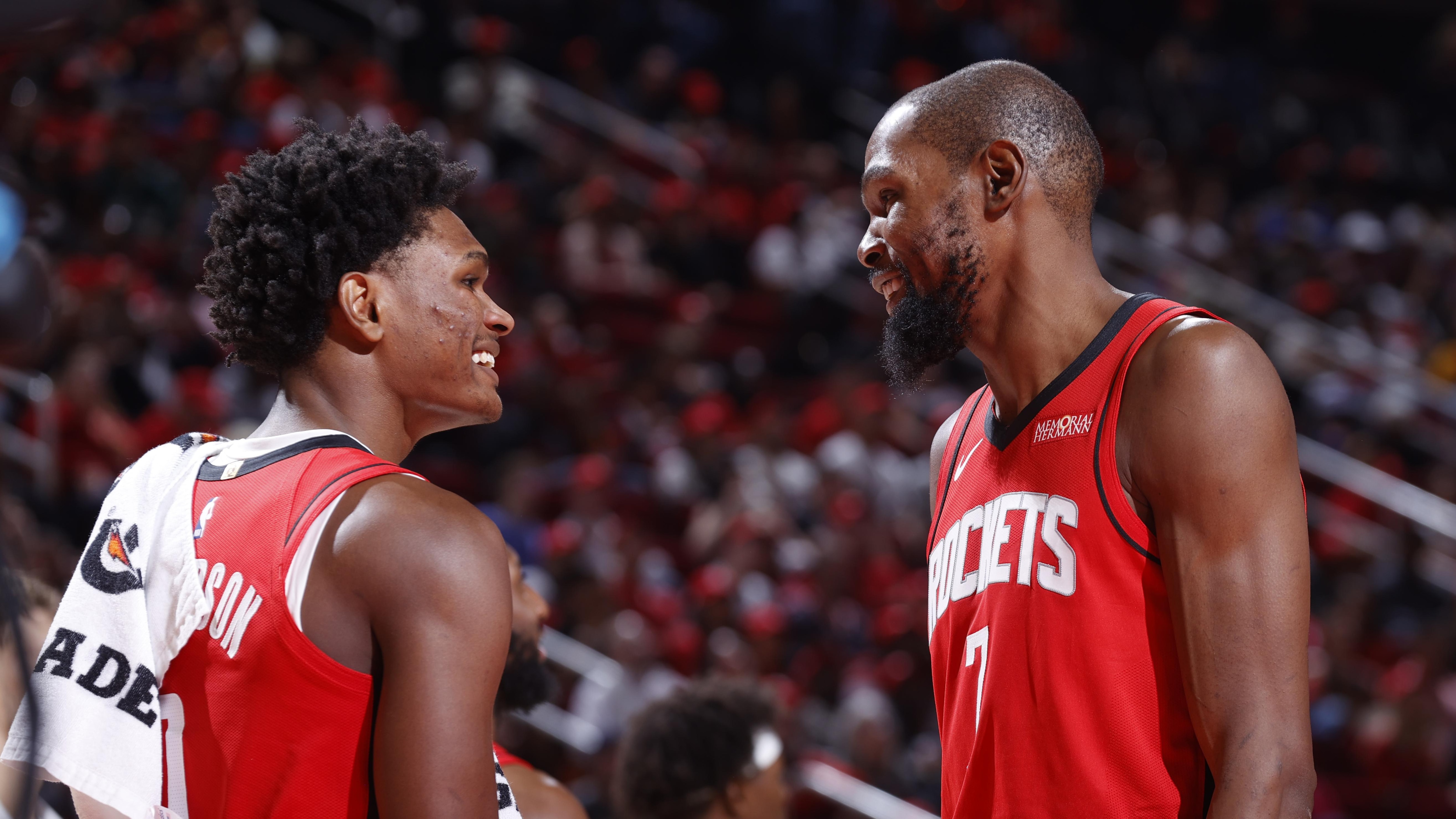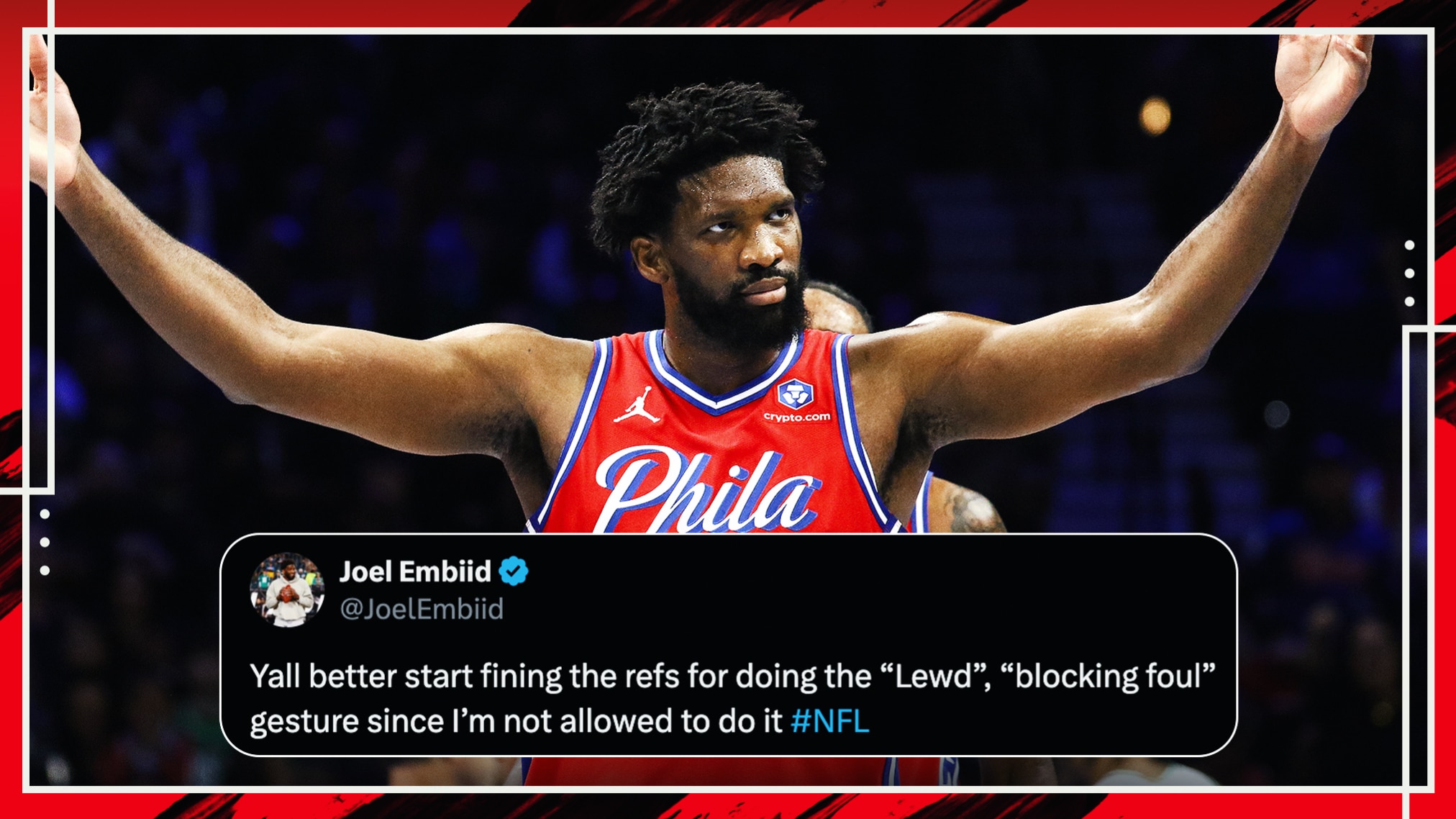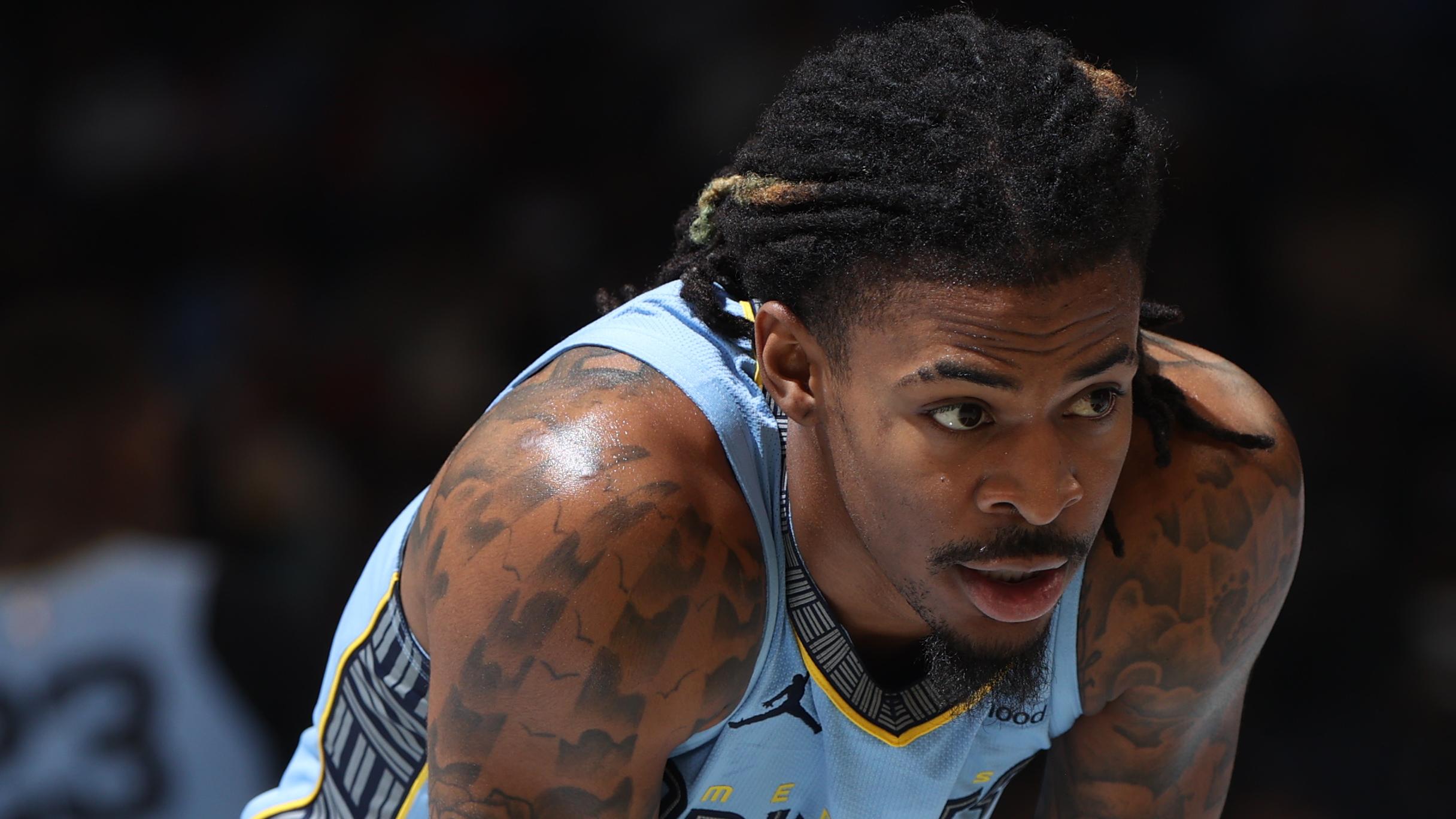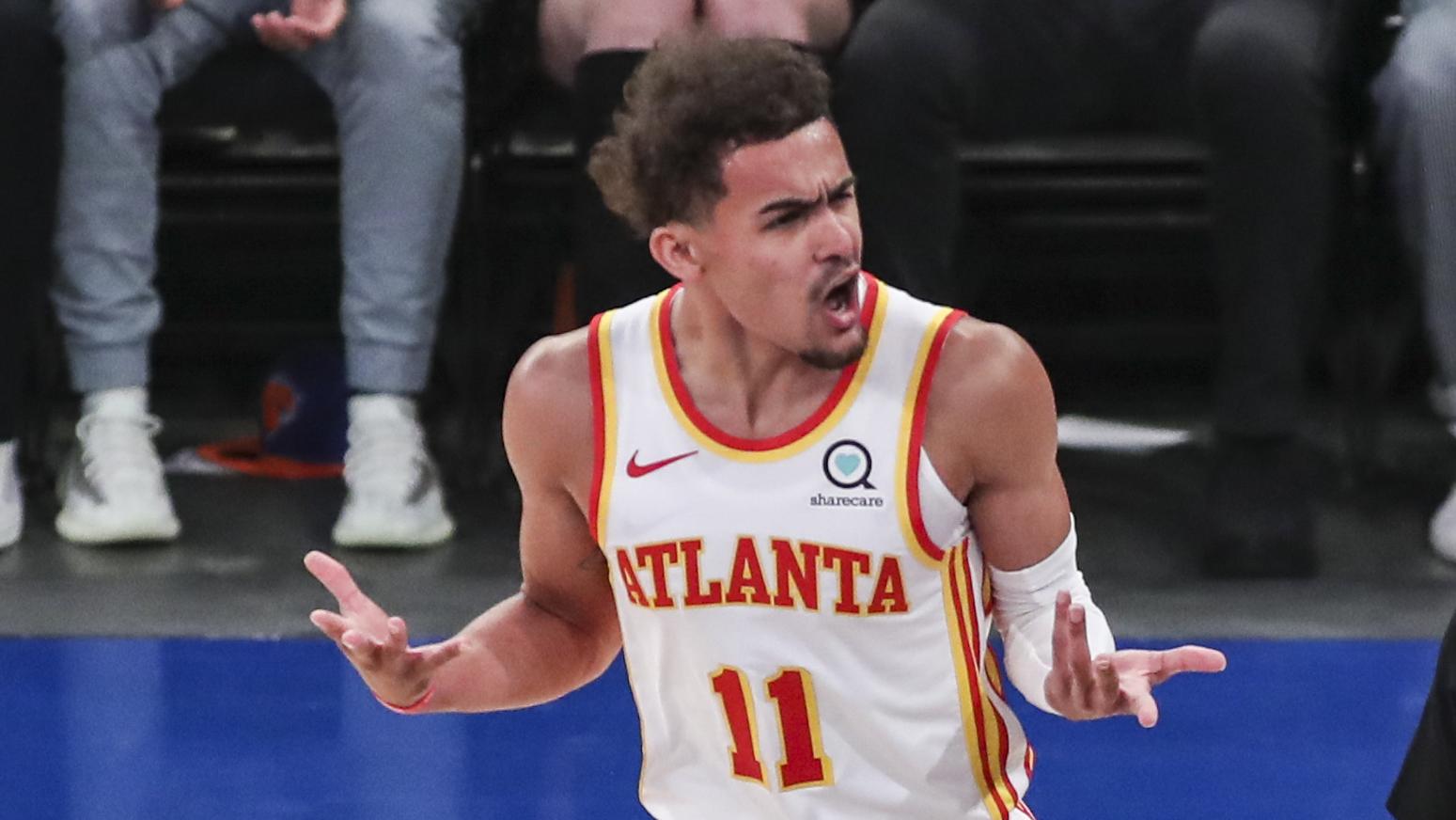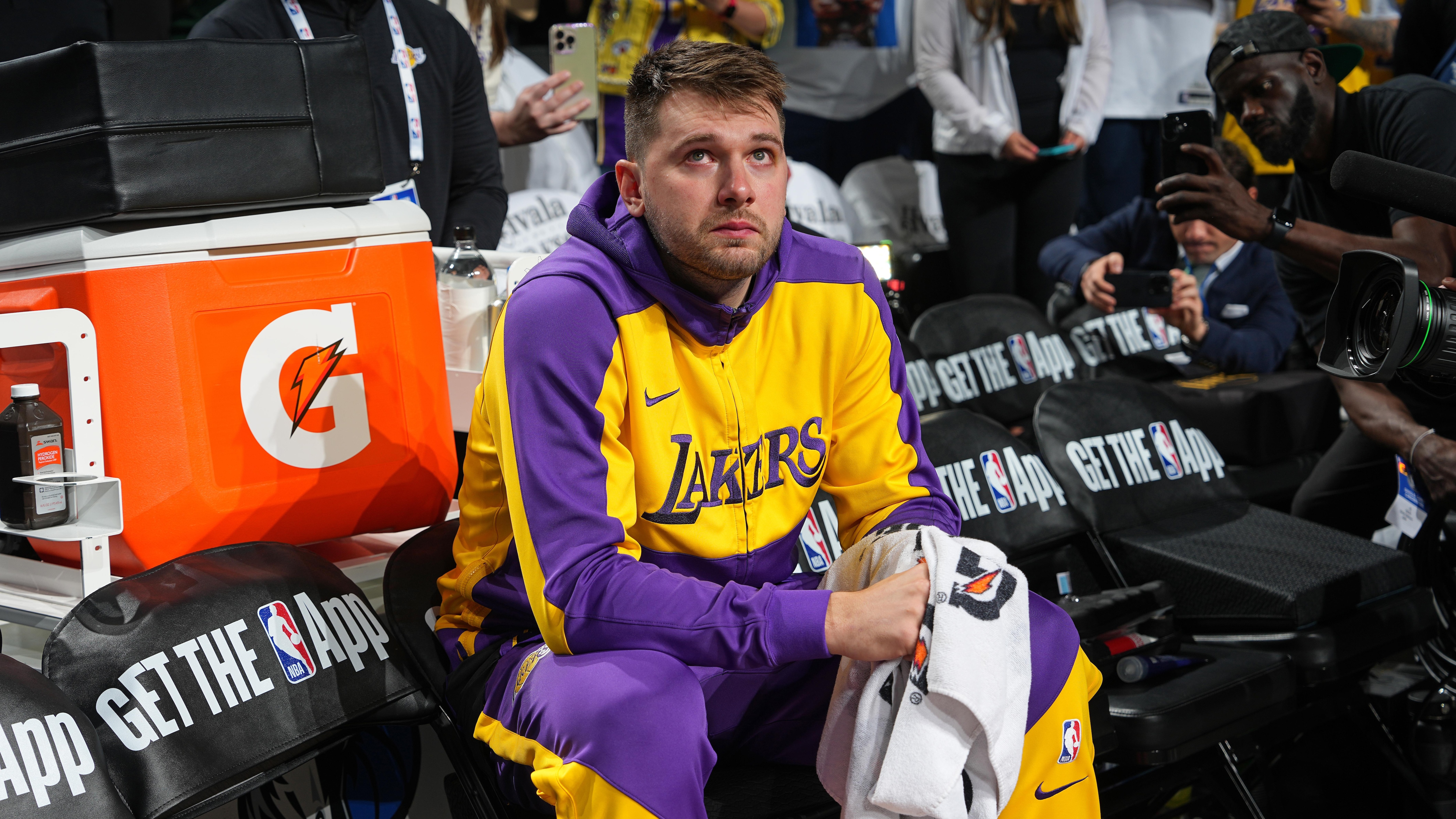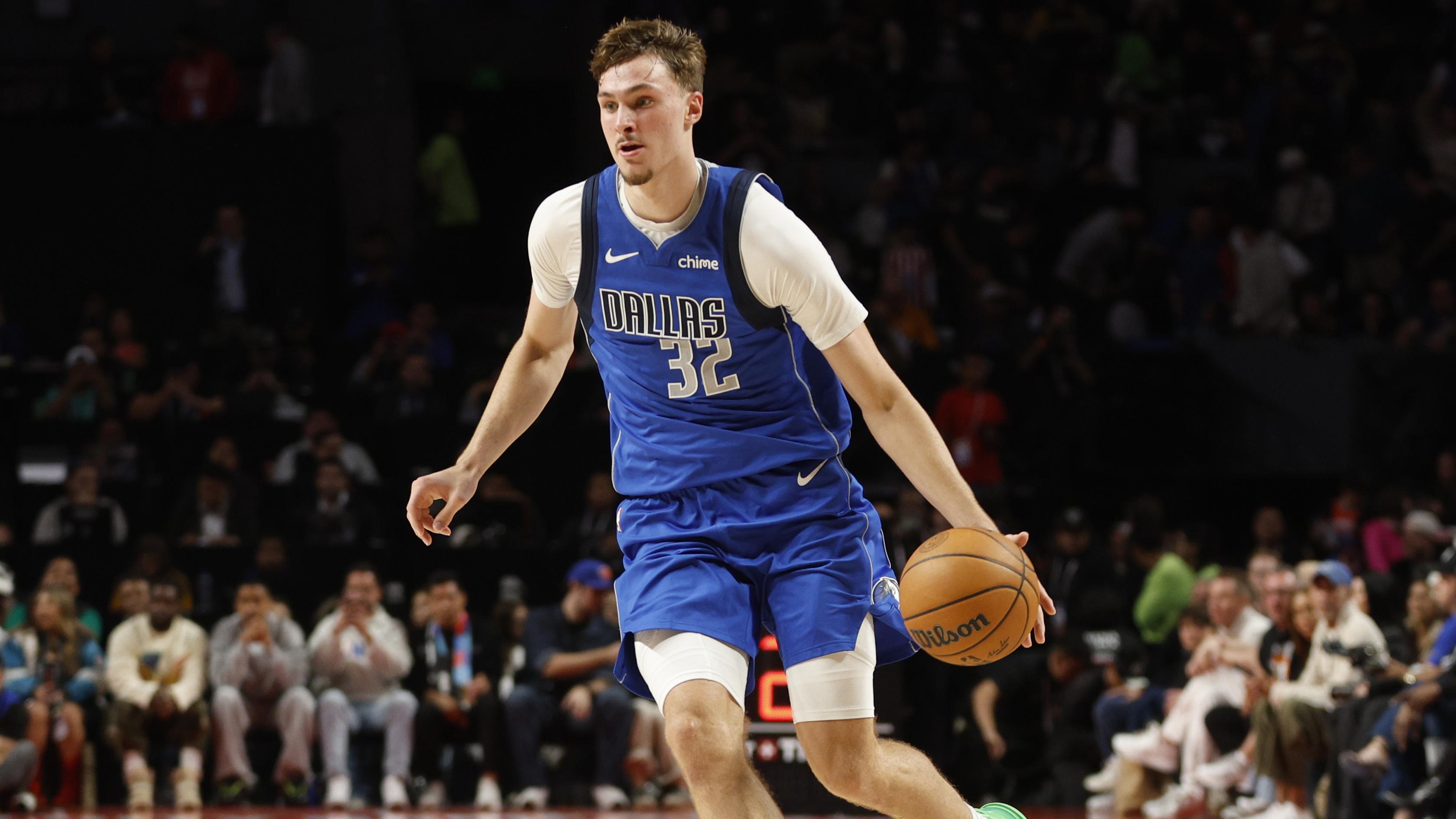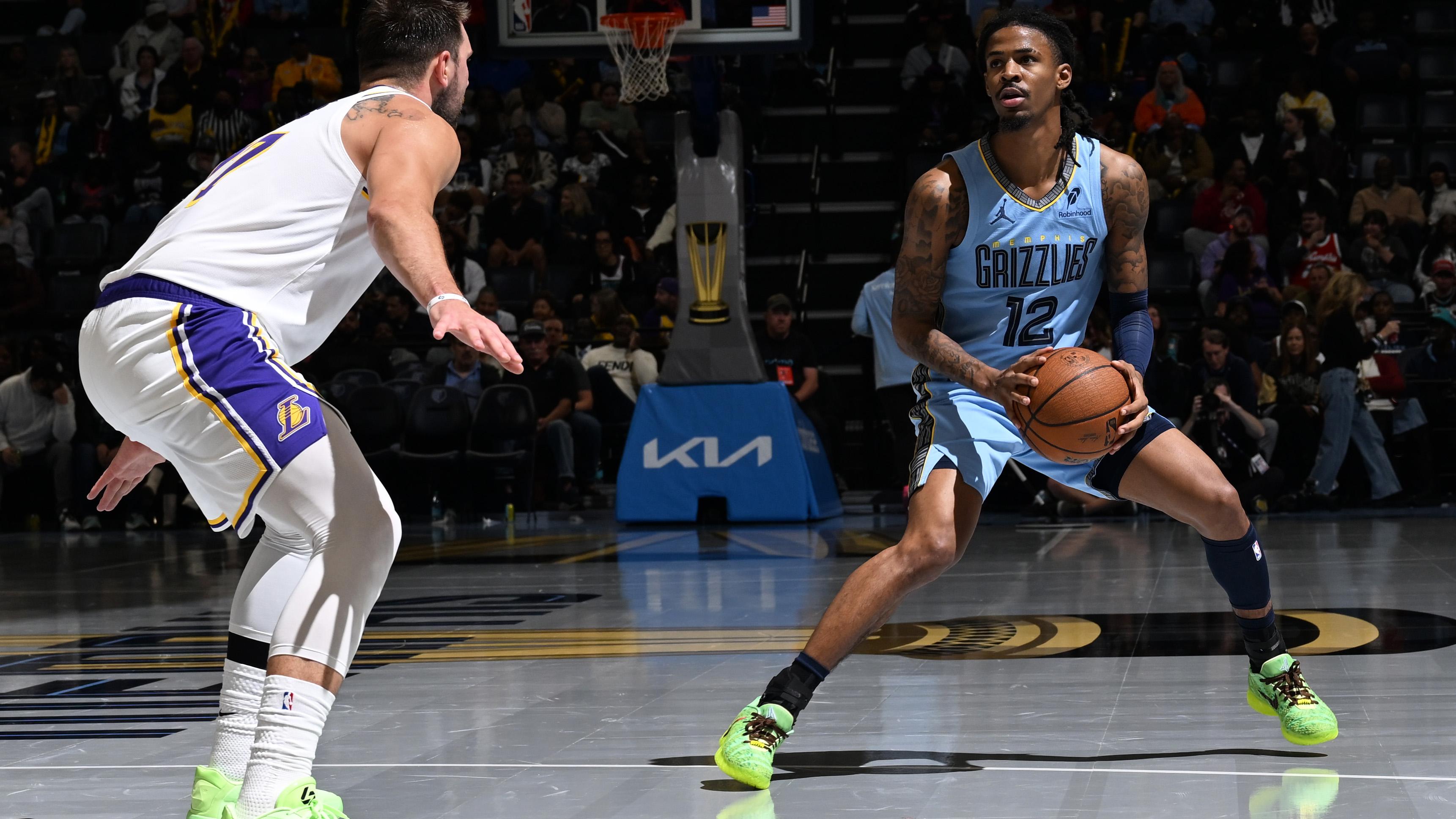Featured Video
Warriors-Pacers Full Highlights

Ranking the Top 2026 NBA Draft Prospects, From 50 to the 'Three No. 1s'
It's widely known that this upcoming class is super top-heavy with one of the most exciting first tiers in recent memory. Three prospects already look like strong No. 1 overall talents.
Thanks to NIL, we're also looking at a strong group of sophomores, juniors and seniors who chose to put off last year's draft and come back.
Our preseason board takes every eligible player into account, including those who may not declare for the 2026 NBA draft.
50. Ryan Conwell (Louisville, SG)
1 of 50
Scoring guards around 6'4" don't have much margin for error in the NBA if they're not also playmakers. But Ryan Conwell possesses such impressive off-ball shotmaking that he could have a chance. He shot 46.4 percent on spot-ups, 44.2 percent off screens, 46.3 percent on handoff threes and 41.5 percent on transition threes.
He can be a threat to get downhill or into his pull-up out of isolation or pick-and-roll sets, but his ticket to the pros will be that plug-and-play scoring/shooting.
49. Richie Saunders (BYU, SG)
2 of 50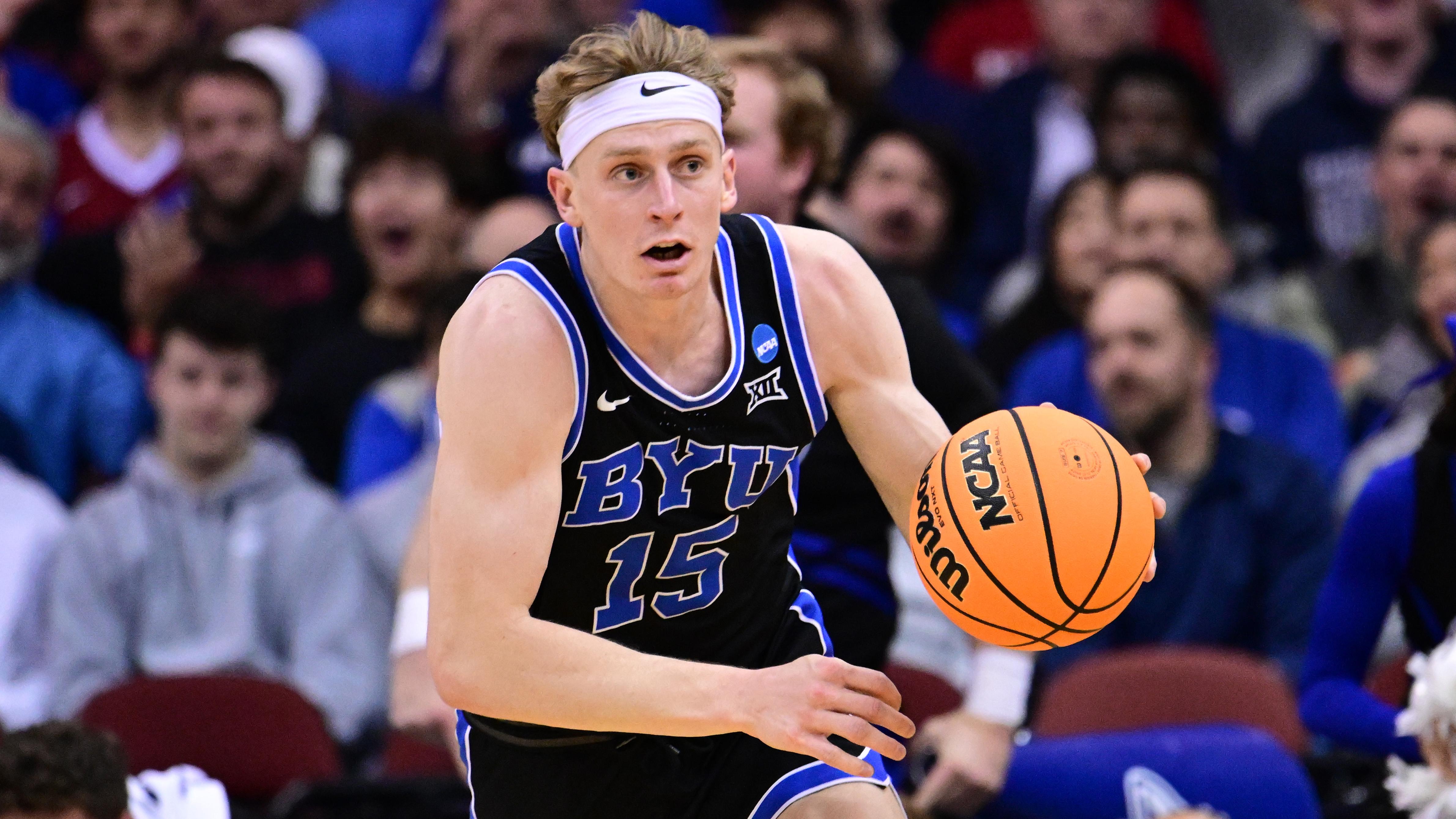
Richie Saunders averaged 16.5 points on 65.1 percent true shooting, and now he'll have AJ Dybantsa and Robert Wright III to draw more attention.
He'll be one of the oldest players in his class (turns 24 in September), and his lack of playmaking will turn some off.
Between the 43.2 percent three-point mark, his shot prep for generating rhythm, his scoring off movement and touch indicators (83.5 percent FT, 53.2 percent floaters), Saunders should be one of the most convincing shotmakers in the 2026 draft.
He also graded as an excellent driver and finisher, adding another layer to his offensive attack.
48. Derrion Reid (Oklahoma, SF/PF)
3 of 50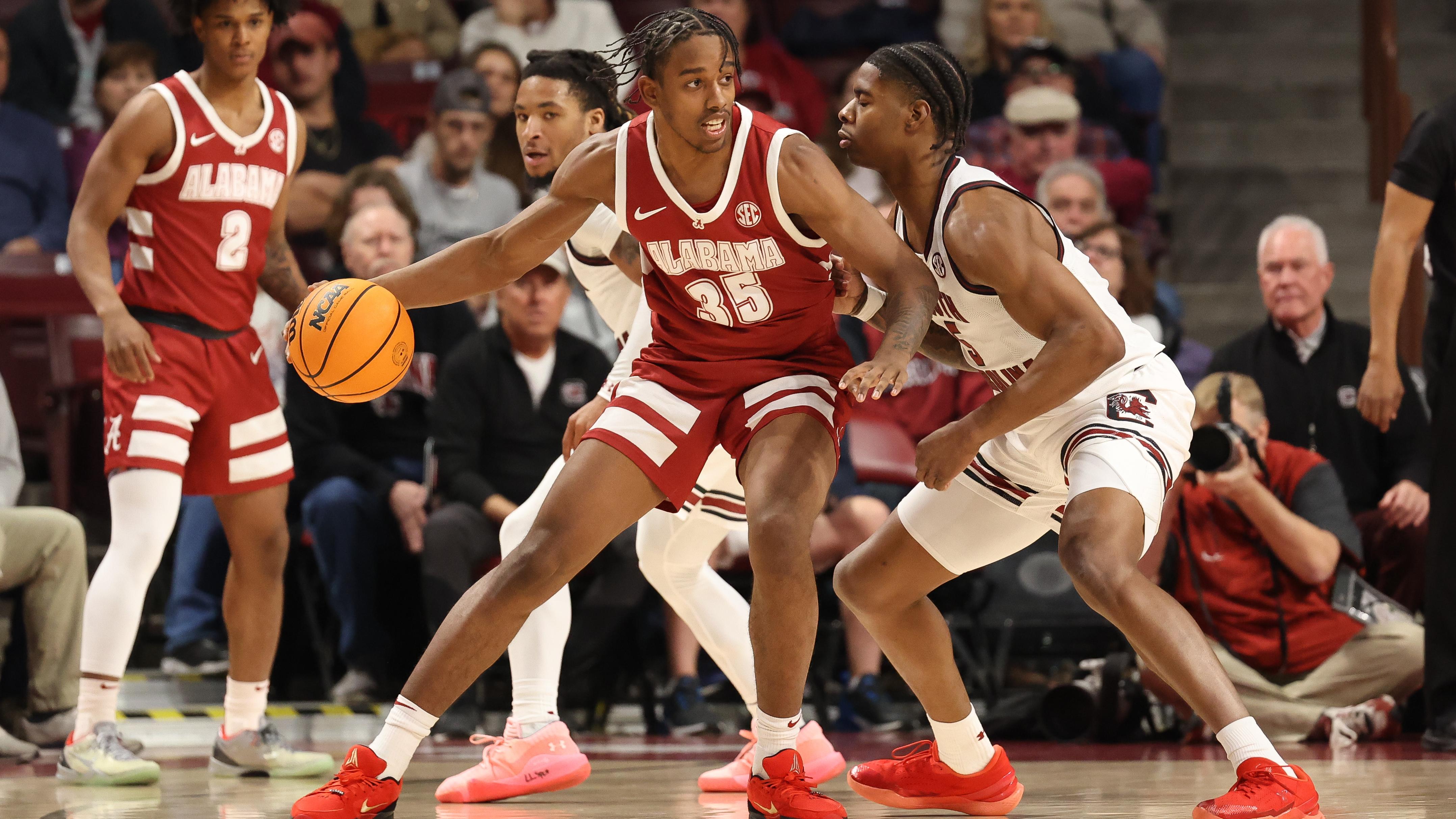
Derrion Reid will have to shoot better than he did at Alabama, but for Oklahoma, he should have a more favorable role with more chances to make plays and build confidence.
At 6'8", 220 pounds, his physical tools scream NBA, and last year's role may have masked some mid-range scoring and shotmaking we saw more of during high school.
With more consistent touches and shots, I'm expecting a bounce-back season that highlights more skill and two-way impact from his strength, length and athleticism.
47. Morez Johnson Jr. (Michigan, C)
4 of 50
Morez Johnson Jr. will bring his destructive power and athleticism from Illinois to Michigan. Of his 77 made field goals last year, 72 came off cuts, offensive boards, transition and rolls to the basket. His entire offense is built around finishing through and over defenders around the basket.
It's unrealistic to expect any notable new skills, but NBA teams looking for more interior activity, second-chance points and easy baskets could see Johnson giving them a jolt.
46. Wesley Yates III (Washington, SG)
5 of 50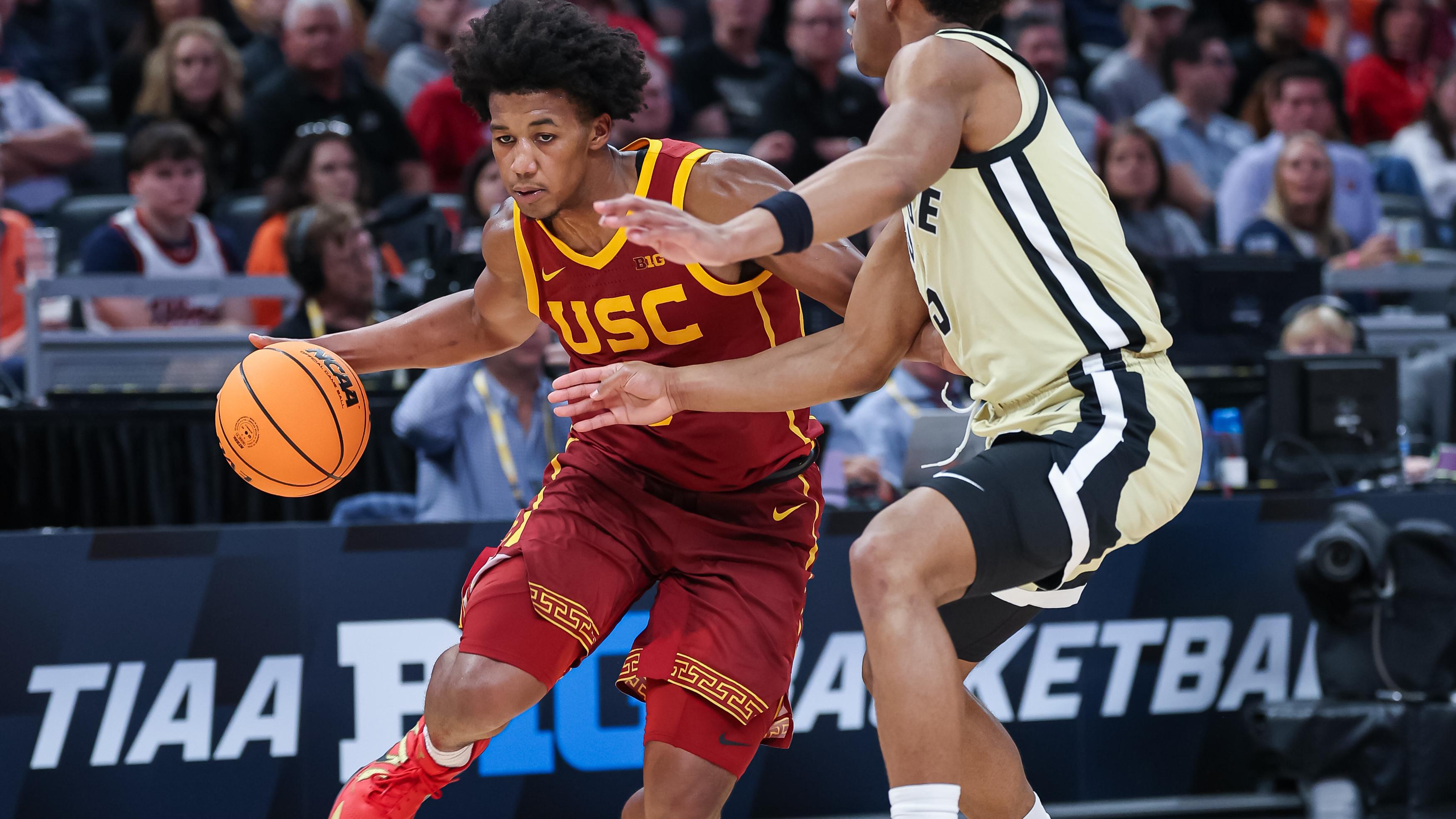
Wesley Yates III was a highly efficient scorer for USC, mostly thanks to reliable shotmaking from on and off the ball. He created into his pull-up effectively and connected often (38.8 percent), but he was even better off the catch, making 50.0 percent of those attempts.
He'd have more buzz if he was able to showcase some playmaking, but Yates is simply a scorer, and at 6'4", 219 pounds, he may have the right tools and skill set to continue scoring at higher levels.
45. Boogie Fland (Florida, PG)
6 of 50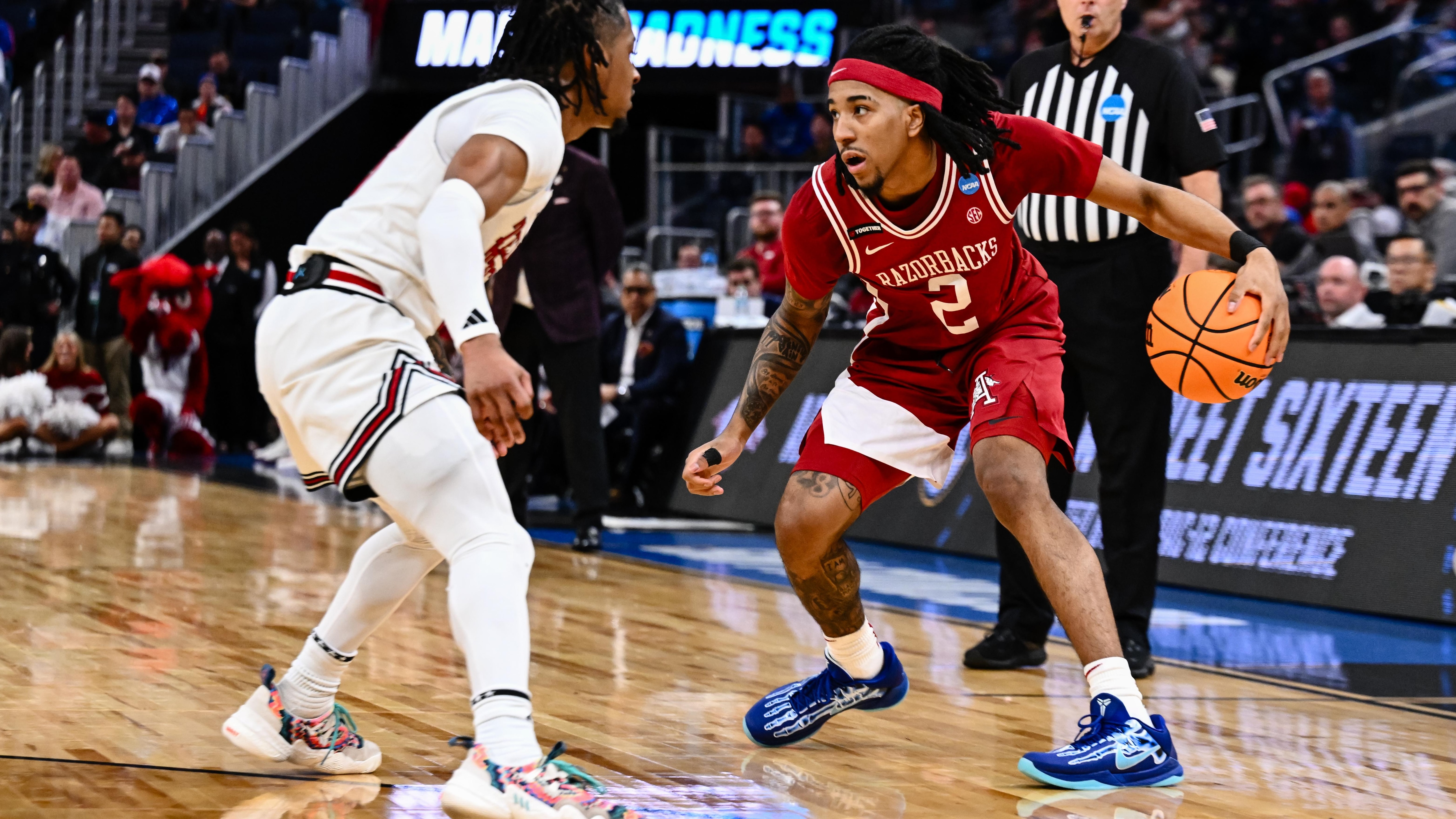
Boogie Fland will have to finish better around the rim to alleviate the concerns over his lack of size and athleticism.
However, he impressed last year with his shotmaking, particularly as a catch-and-shooter, while his 108 assists to just 29 turnovers highlighted both dribble creativity, command in pick-and-rolls and passing.
He'll have plenty of talent around him, including another ball-handler in Xavian Lee, big-men finishers in Alex Condon and Rueben Chinyelo and a versatile jumbo wing in Thomas Haugh.
Fland should be in a good position to showcase his table-setting skills, and then pick the right spots to attack and step into his pull-up.
44. Alex Karaban (Connecticut, SF)
7 of 50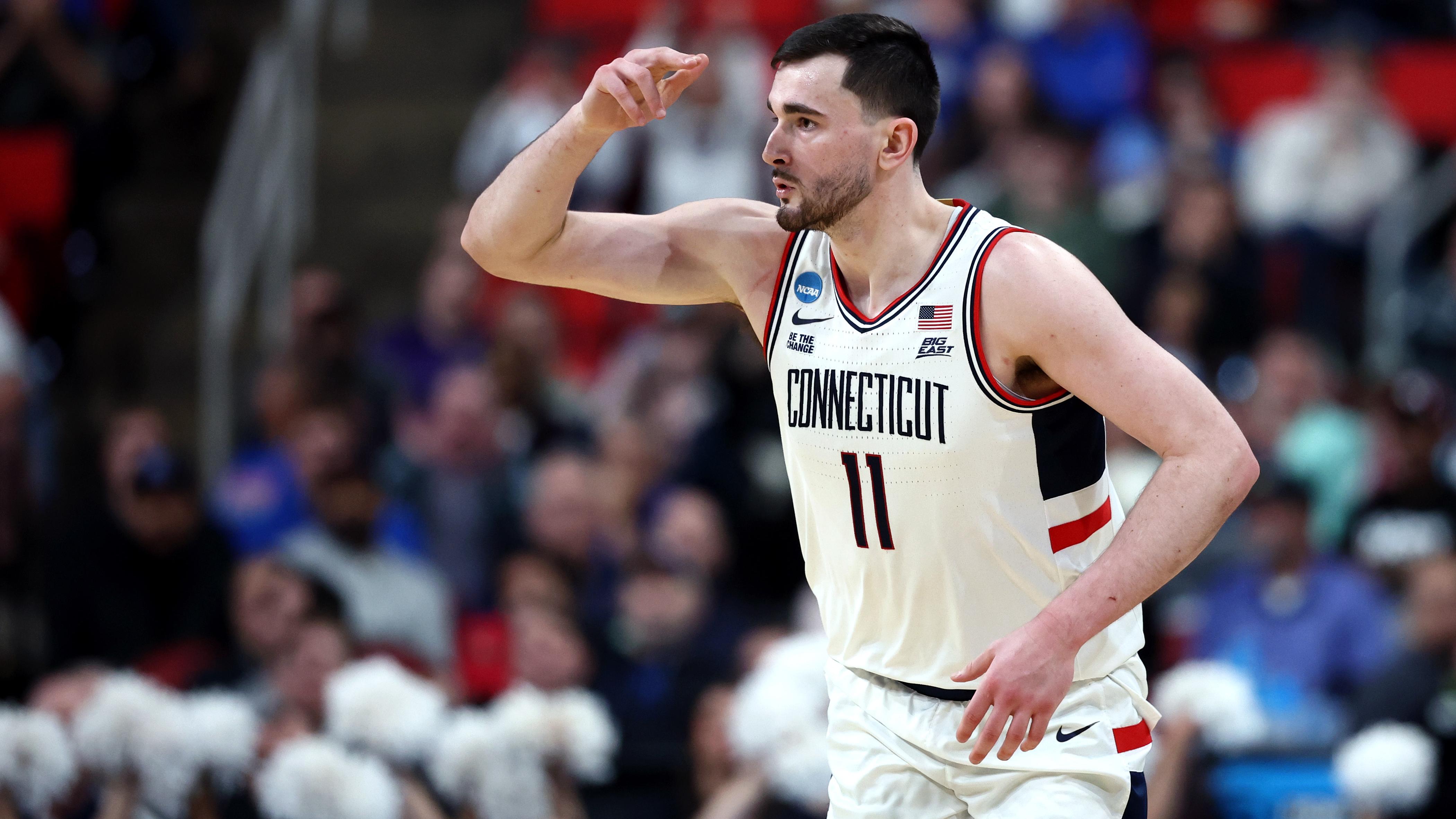
There's always been interest in Alex Karaban. There just hasn't been overwhelming love after he's shown minimal improvement from year to year.
Still, there will be teams drafting in the second round that see a value pick who can provide plug-and-play shotmaking, finishing efficiency, some defensive toughness and the professionalism to make it without standout athletic talent.
His track record and comfort level for scoring off the ball should help teams see a fit with the 6'8" forward.
43. Shon Abaev (Cincinnati, SF)
8 of 50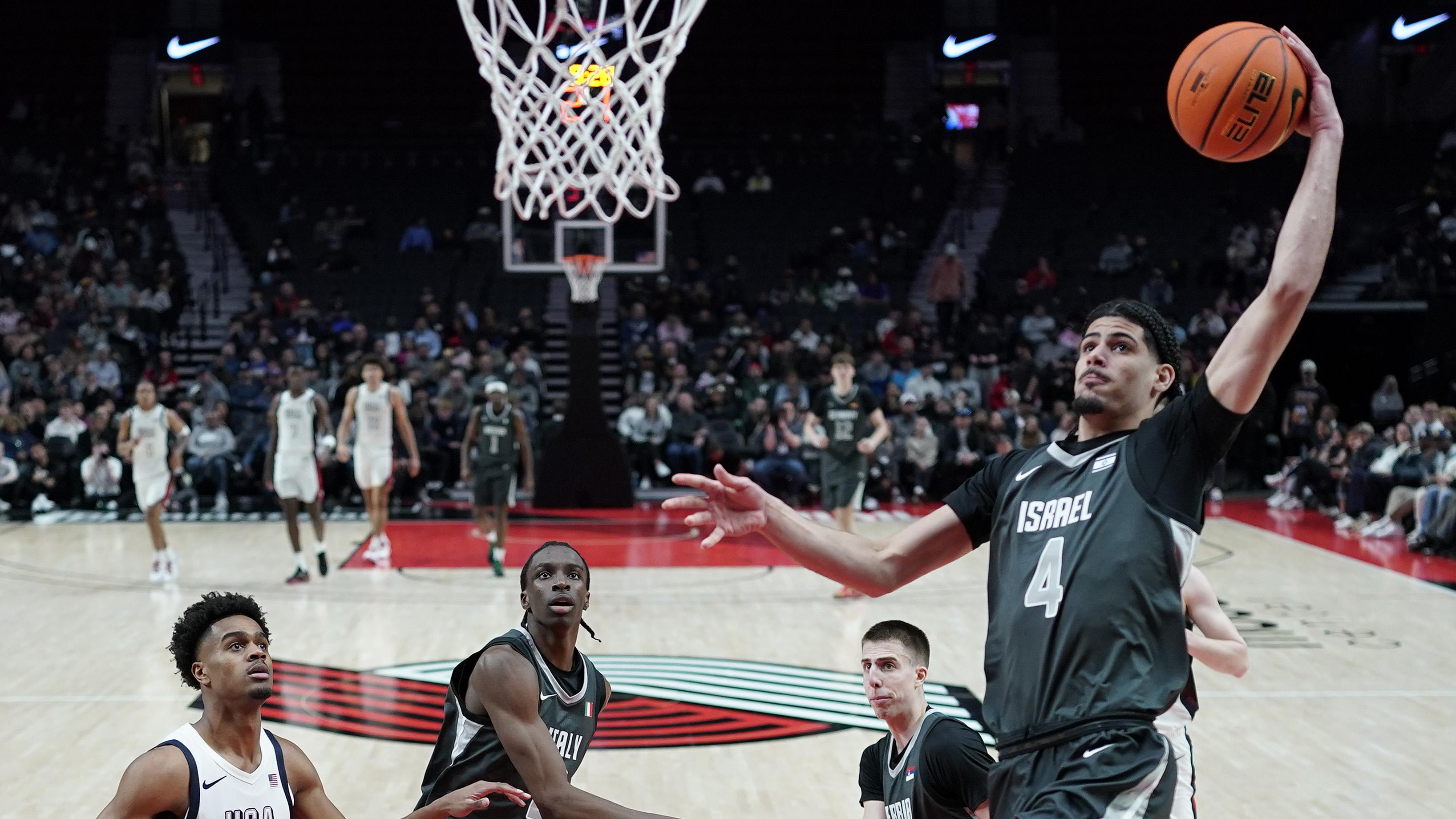
A 6'8" scoring wing, Shon Abaev should bring creativity and tough shotmaking to Cincinnati. He has clear range and confidence, which works for and against him.
He put up nine points in just seven minutes at the Nike Hoop Summit, and that type of instant offense is what Cincinnati will be expecting from him.
The last one-and-done Bearcat was Lance Stephenson in 2010, and with Baba Miller and Moustapha Thiam transferring in, Abaev's role just might not be big or consistent enough for him to build a first-round case right away.
42. Adrian Wooley (Louisville, PG/SG)
9 of 50
An unheralded recruit last year for Kennesaw State, Adrian Wooley wound up the fifth leading scoring freshman. There should be far more attention on his creativity and shotmaking at Louisville this year.
He'll have to adapt to playing with potential lottery pick Mikel Brown Jr. and veteran scorer Ryan Conwell. But scouting Wooley in a vacuum, he has outstanding feel off the dribble, changing speeds and using the right footwork to get to spots. And he shot 42.2 percent from three, looking sharp both pulling up and spotting up.
With less of a need to hunt for shots at Louisville, eyes will be on Wooley's playmaking and whether he can cut down from last year's 18.3 turnover percentage.
41. Jalen Haralson (Notre Dame, SF)
10 of 50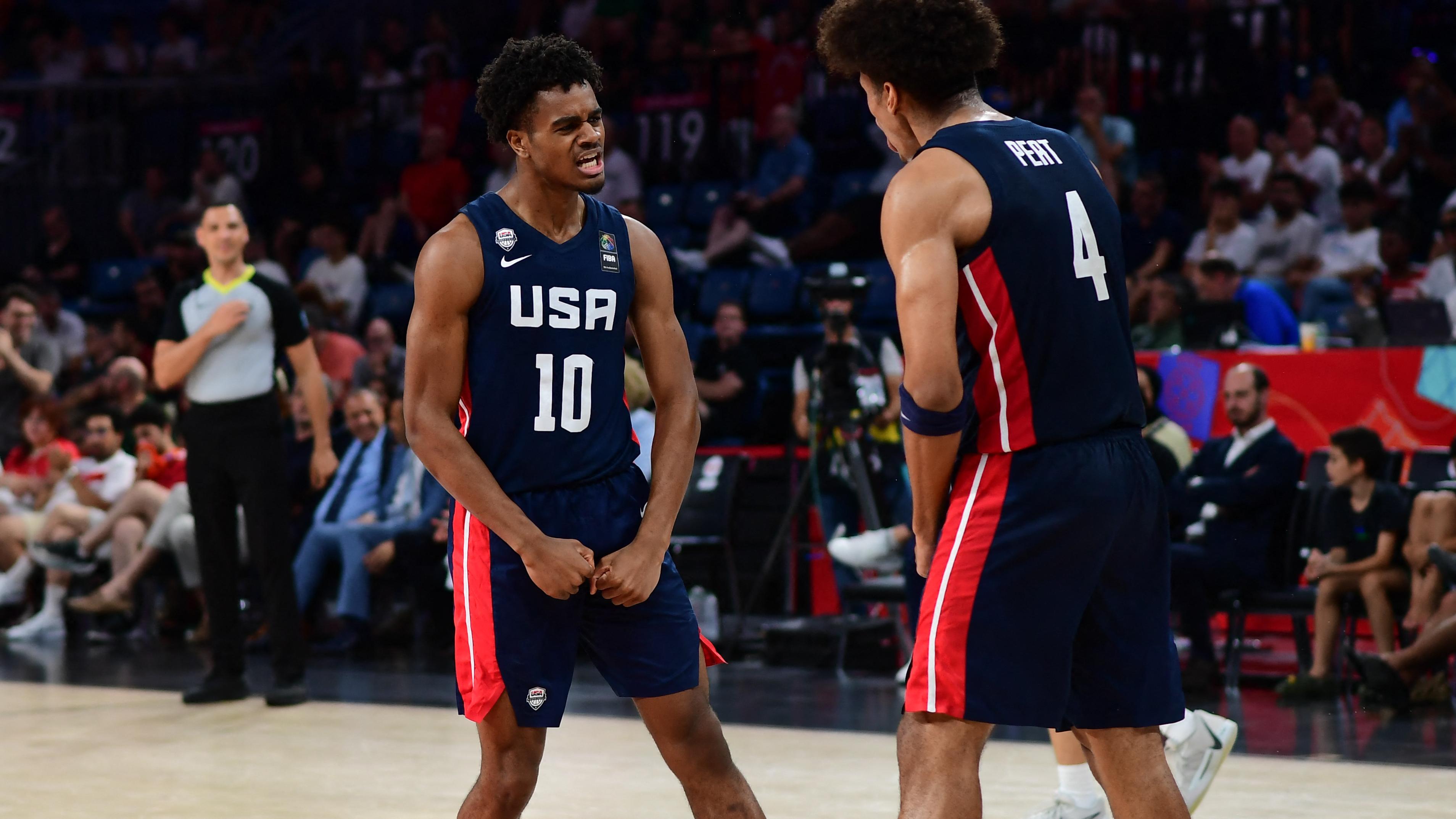
Jalen Haralson should pass eye tests right away at Notre Dame with his NBA physical profile and versatility to make plays on and off the ball.
Notre Dame has only had one one-and-done player, Blake Wesley, in its history, and there will likely be questions about Haralson's perimeter scoring after his freshman season. But a two-year timeline seems realistic for him to improve enough and complement his ball-handling, physical driving, passing and cutting with threatening shooting.
40. Paul McNeil (NC State, SG)
11 of 50
Paul McNeil didn't log 20 minutes in a game last year until late February, when he scored 24 points in a win over Wake Forest.
With coach Will Wade coming in, along with a handful of productive, veteran transfers, McNeil will have a breakout opportunity for a team that should earn plenty of attention.
A 6'5" guard/wing, he moves with noticeable quickness and decisiveness when creating for himself. He's a convincing shotmaker who gets clean rhythm into his jumpers.
The sophomore will be 19 years old for his entire sophomore season, and a bump in usage/minutes should help McNeil come alive as a scorer and legitimate draft prospect.
39. Jasper Johnson (Kentucky, PG/SG)
12 of 50
Jasper Johnson could enter the one-and-done conversation with his potent shotmaking and touch shots. Depending on how he looks as a playmaker and if scouts question his 175-pound frame for a scoring guard, he may also have something to prove after his freshman season.
Whether it's in 2026 or 2027, there should be interest in Johnson's confident shooting, uptempo pacing and instant offense. He came off USA's bench this summer at the U19s to average 8.0 points in 15.4 minutes while draining multiple threes in four-of-seven games.
Johnson will share the ball in Kentucky's backcourt with junior transfer Jaland Lowe and Collin Chandler.
38. JT Toppin (Texas Tech, PF)
13 of 50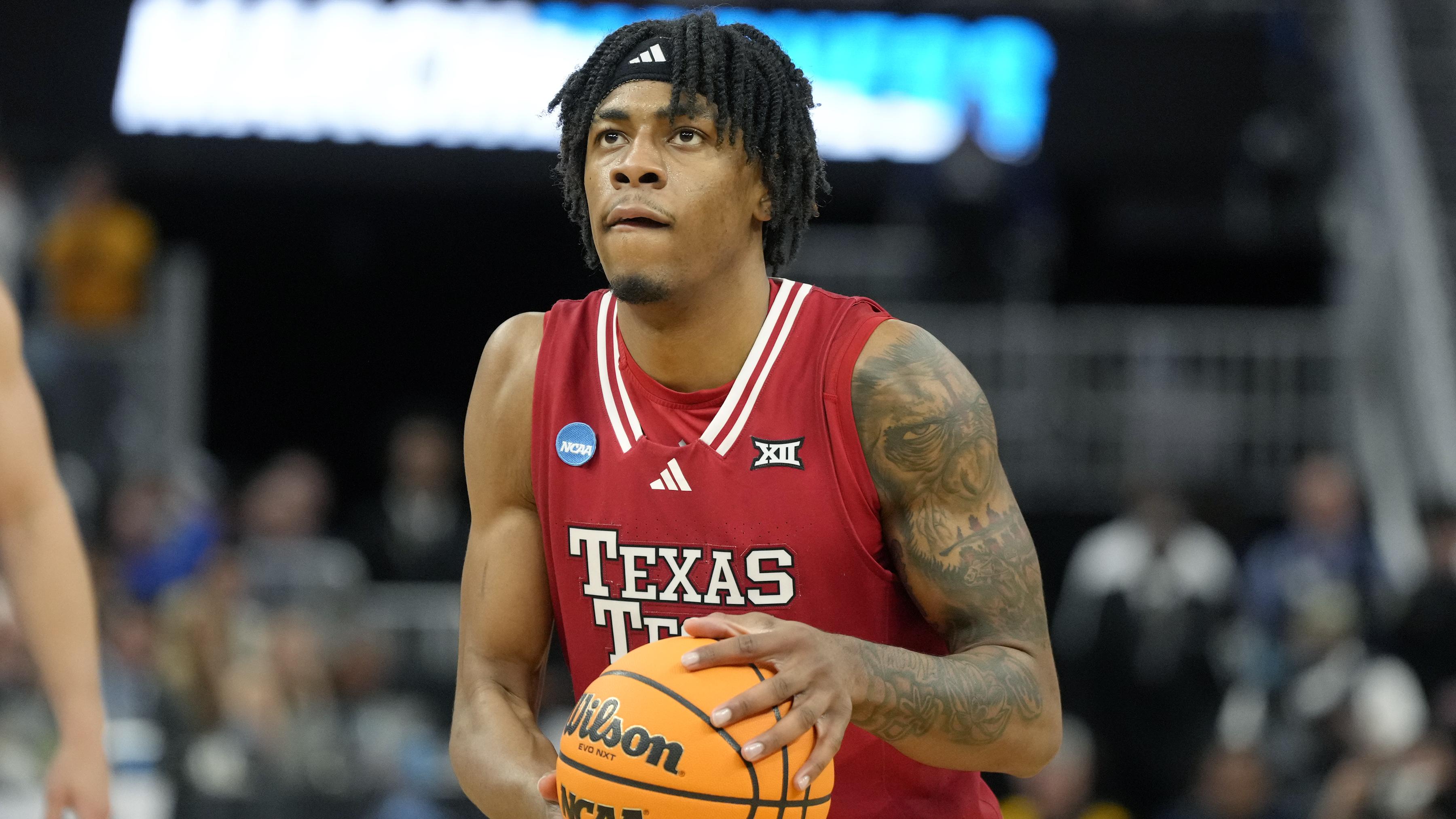
JT Toppin didn't even bother testing the draft process despite some scouts having him graded as a first-round pick. Credit NIL for swaying an NBA talent back to college basketball.
Toppin, who had a 41-point game last February, two more 30-plus-point games after that and scored 20 or more in his final three NCAA tournament outings, has been a force around the basket with his touch, motor and instincts.
Making more threes next season is his ticket back into the first-round discussion for 2026.
37. Anthony Robinson II (Missouri, PG)
14 of 50
Though Anthony Robinson II didn't blow up as a scorer last year, he checked a mix of valued boxes. He's on a short list of NCAA players to ever put up a 25.0 assist percentage, 5.0 steal percentage and a 60.0 true shooting percentage.
One of the nation's most efficient pick-and-roll ball-handlers, he shot 47.5 percent on pull-ups and showed touch on his floaters. He's a two-way playmaker who makes smart passing reads and consistently earns strips and forces turnovers with his quick hands and instincts.
Tamar Bates and Caleb Grill leaving should result in a big spike in usage for Robinson, who'll want to look more aggressive getting downhill and looking for his shot.
36. Thomas Haugh (Florida, SF/PF)
15 of 50
Expected to play more wing/small forward this year, Thomas Haugh figures to draw NBA attention with his 6'9" size, three-point range, passing and coordination/fluidity finishing on the move.
He seems poised to take another step forward with his shooting, which could help create an appealing archetype, considering his positional height, combo-forward versatility, 14.2 assist percentage and excellent conversion rate in transition.
35. Ognjen Srzentic (Mega Superbet, SF)
16 of 50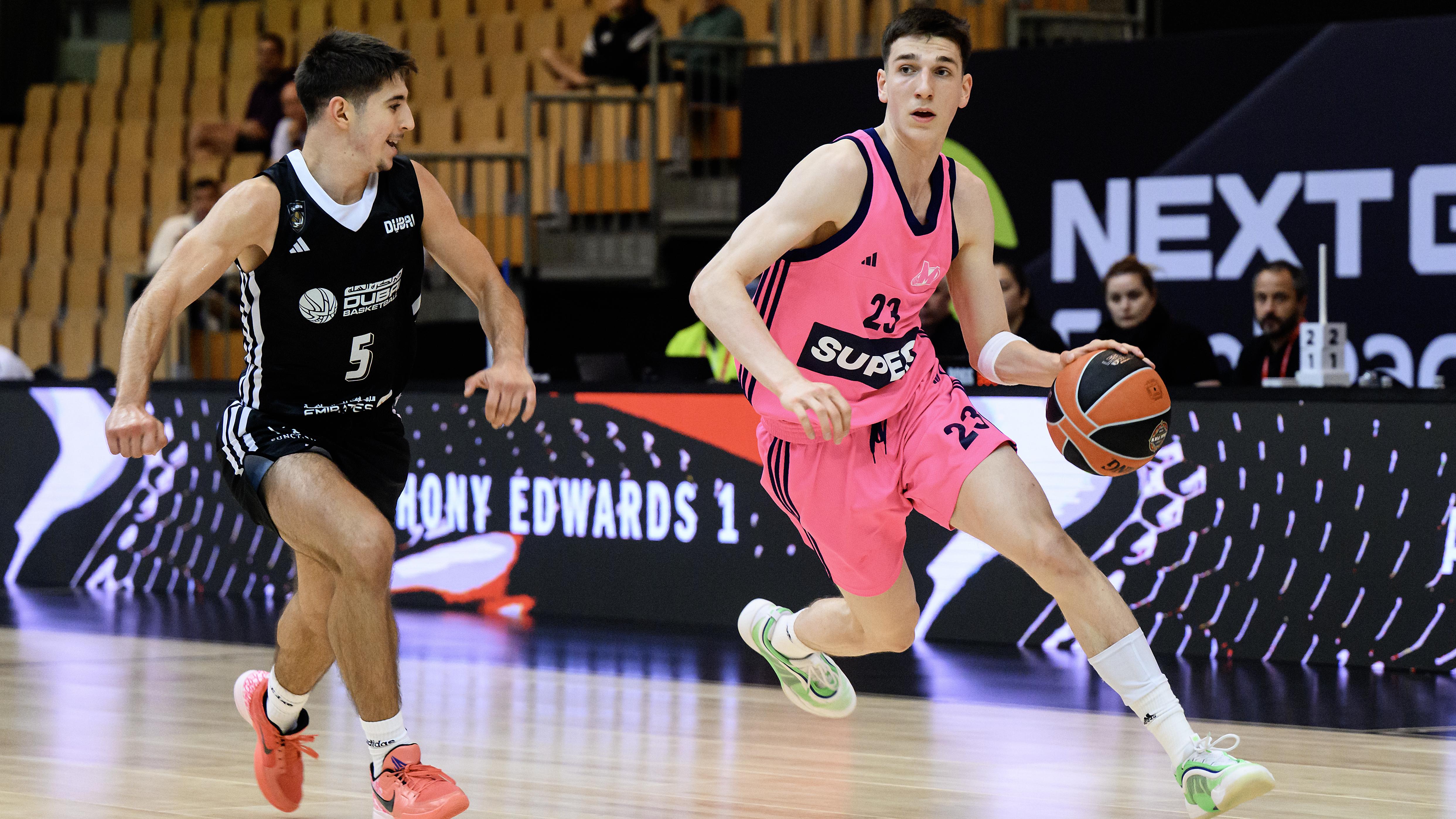
MVP of ANGT Istanbul and a 22.0-point scorer for Mega at ANGT, Ognjen Srzentic seems set for a key role with Mega's main squad this season.
While this club constantly pumps out draft picks, Srzentic should be an easy NBA draw with his clean shooting stroke and ball-handling to create as a 6'7" guard.
34. Sergio de Larrea (Valencia, SG)
17 of 50
Sergio de Larrea hit NBA radars last year with an appealing mix of shooting and playmaking for a 6'5" teenager.
In limited minutes, he shot 43.2 percent from three and registered a 27.6 assist percentage. Not one freshman was able to hit those marks last year.
De Larrea isn't an explosive athlete or finisher, but NBA teams could see a potential fit/combo/connector with his ability to pass and make shots.
33. Alex Condon (Florida, C)
18 of 50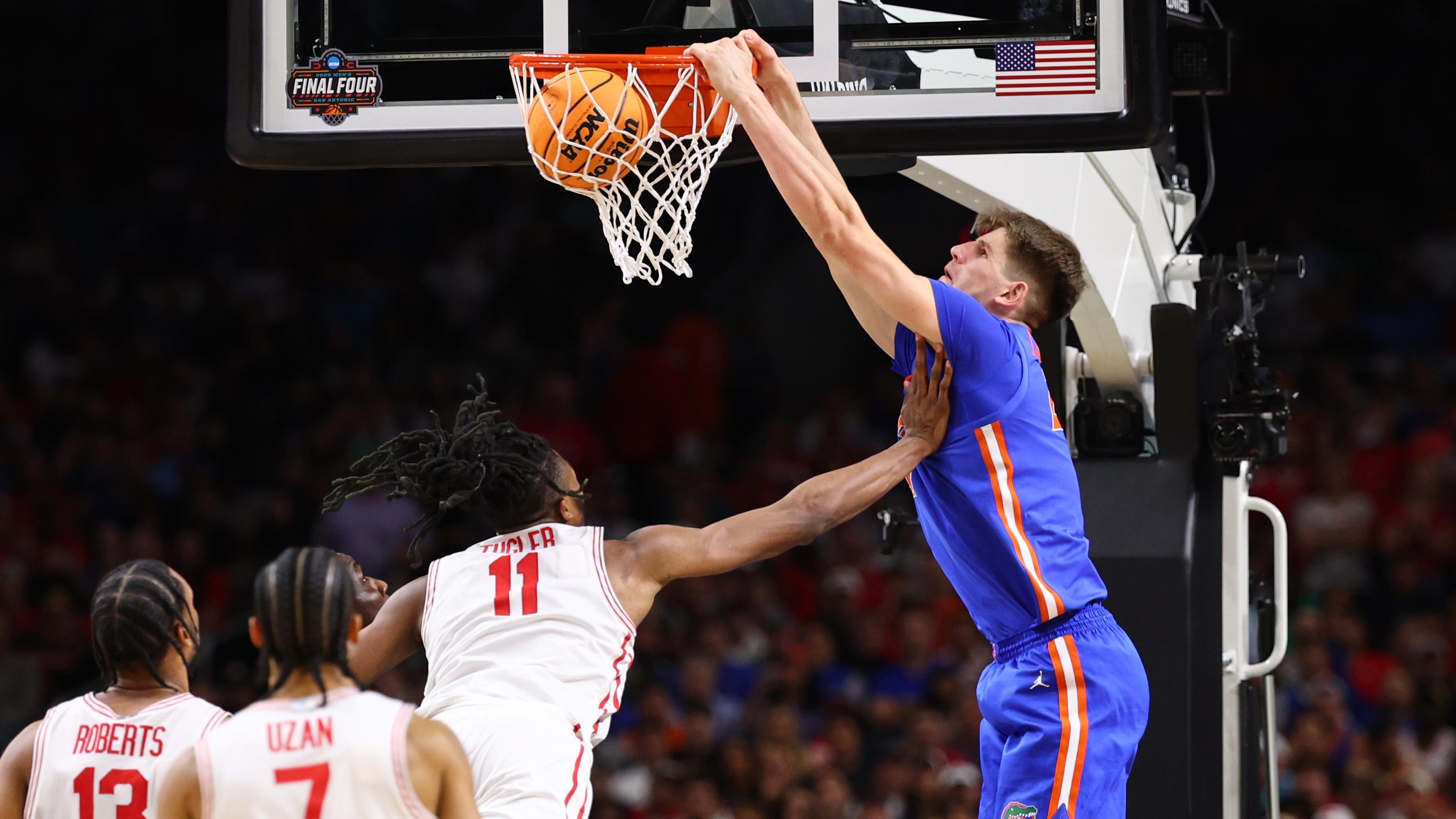
Alex Condon generated first-round buzz this past year with his athletic finishing, defensive activity, passing and three-point range.
He'll return to the defending champs, presumably with a sizable role to use for showing more self-creation (face-up and post game) and consistent shooting. Condon becomes less appealing if he's unable to take a step forward with his shot, and last year's 60.4 free-throw mark does raise questions.
32. Meleek Thomas (Arkansas, PG/SG)
19 of 50
Meleek Thomas will have to compete for touches alongside DJ Wagner and Darius Acuff Jr. in the Arkansas backcourt. That could cut into his opportunity to develop his playmaking and sell scouts on primary-ball-handler/lead-guard potential.
He should be able to generate attention and interest with his self-creation and shotmaking skill. At 6'5", he is a dangerous one-on-one player, capable of scoring off a variety of moves into drives, step-backs, turnaround and floaters.
It just seems possible to expect some freshman struggles around shot selection, physicality and role before entering 2026-27 more comfortable and free.
31. Miles Byrd (San Diego State, SG/SF)
20 of 50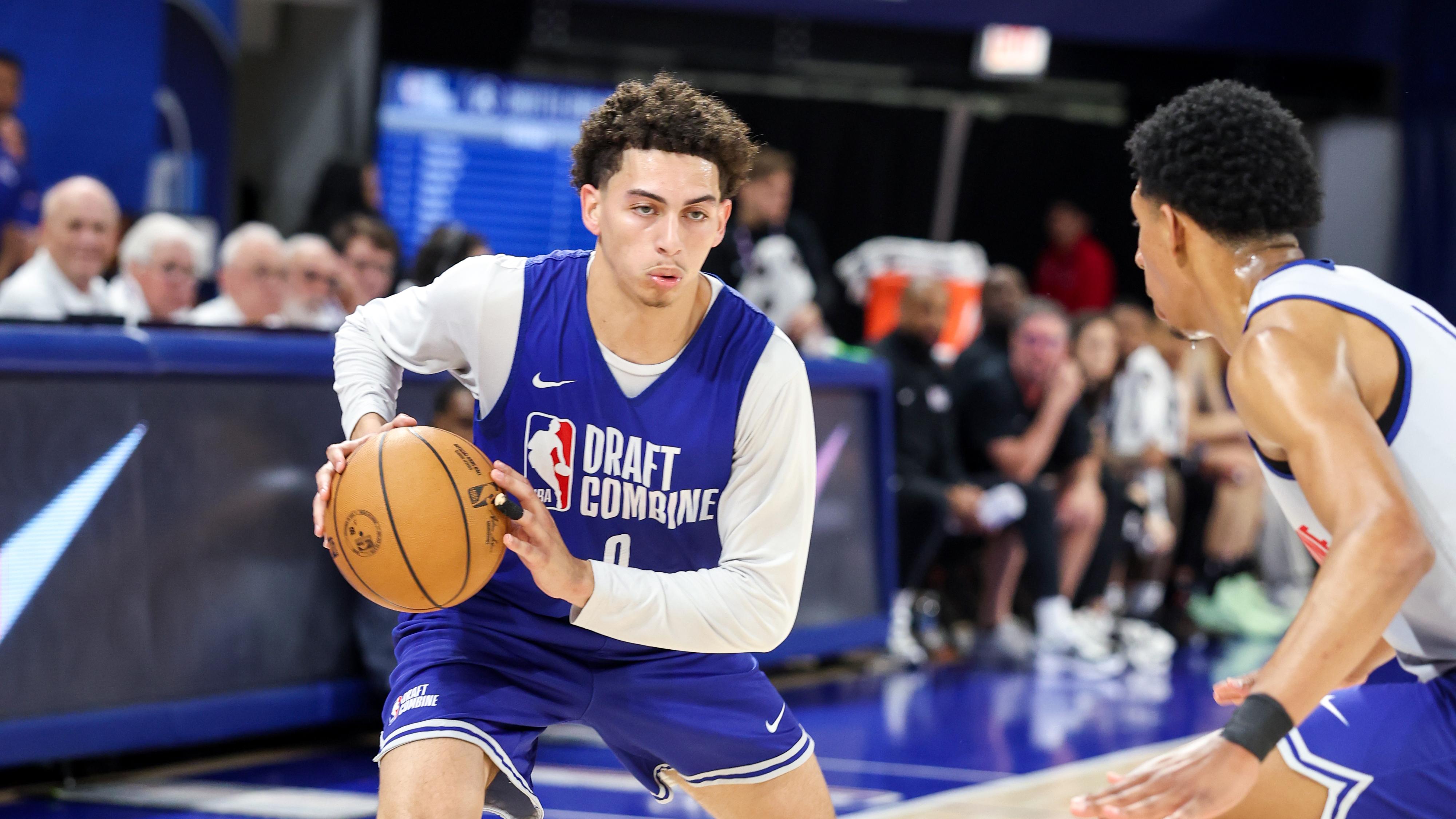
Miles Byrd's defensive instincts were the big eye-opener last year. And when you combine his 4.3 steal percentage with 53 made threes and an 18.2 assist percentage, there should be a visible path to an NBA three-and-D or connector role.
He also looked the part during NBA combine scrimmages when he was drilling jumpers and blowing up plays.
Byrd's 45.2 percent finishing mark on lay-ups has to improve, however, as it shines too much negative light on his thin frame and lack of burst/explosion.
30. Patrick Ngongba II (Duke, C)
21 of 50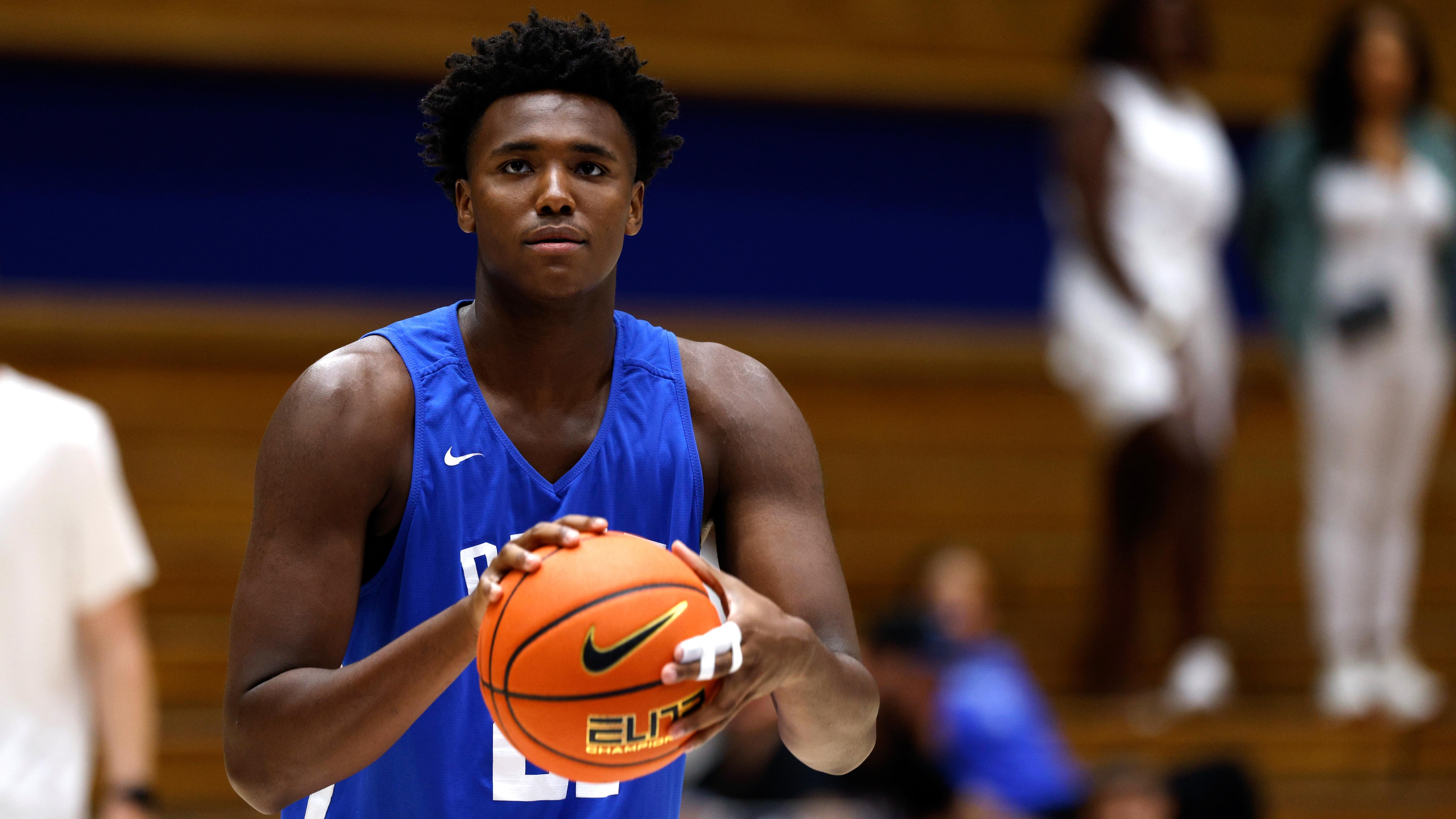
There's nothing flashy about Patrick Ngongba II's game, nor is there any clear path to upside. But NBA teams could eventually see him as useful frontcourt depth, as the 6'11", 250-pound big has a special feel for how to finish plays/drives and deliver assists as a playmaking big.
He has excellent hands and patience around the basket, though Ngongba looks more interesting when he's facing up, attacking, taking methodical steps and converting driving layups.
He seemed to give positive minutes whenever he was on the floor last year, and a bigger role should be coming his way in 2025-26.
29. Darius Acuff Jr. (Arkansas, PG/SG)
22 of 50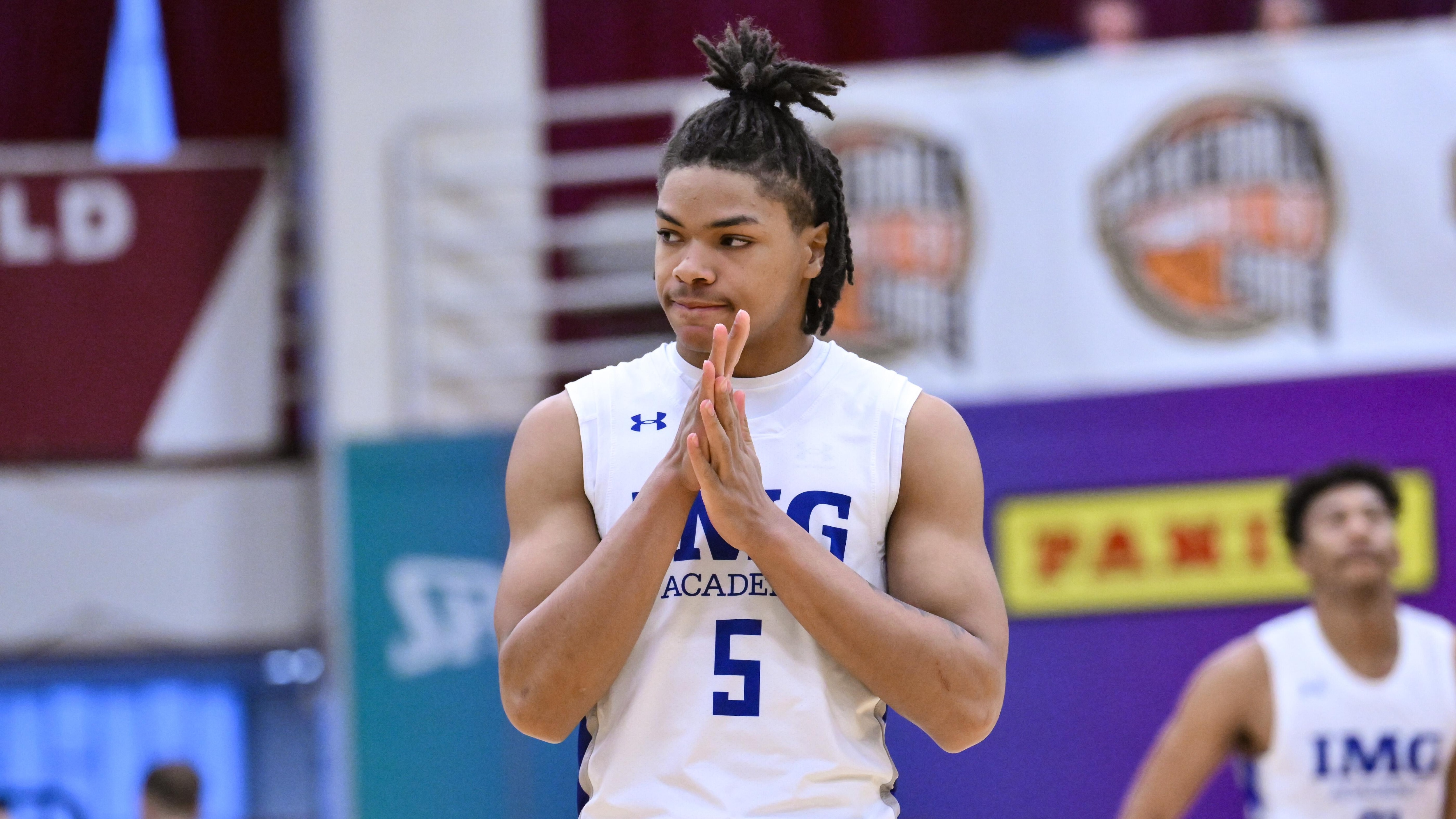
Darius Acuff Jr. is wired to score with his aggression attacking the rim and confident shotmaking. He doesn't wow with speed or explosion, but he's very effective playing slow to fast to get to spots. Acuff uses that change of speed to crack the first line of defense and create pull-up, floater and assist opportunities.
Sharing the ball with DJ Wagner and Meleek Thomas will just require an adjustment, and scouts will want to see some better balance and decision-making with his shot selection and playmaking.
28. Isaiah Evans (Duke, SF)
23 of 50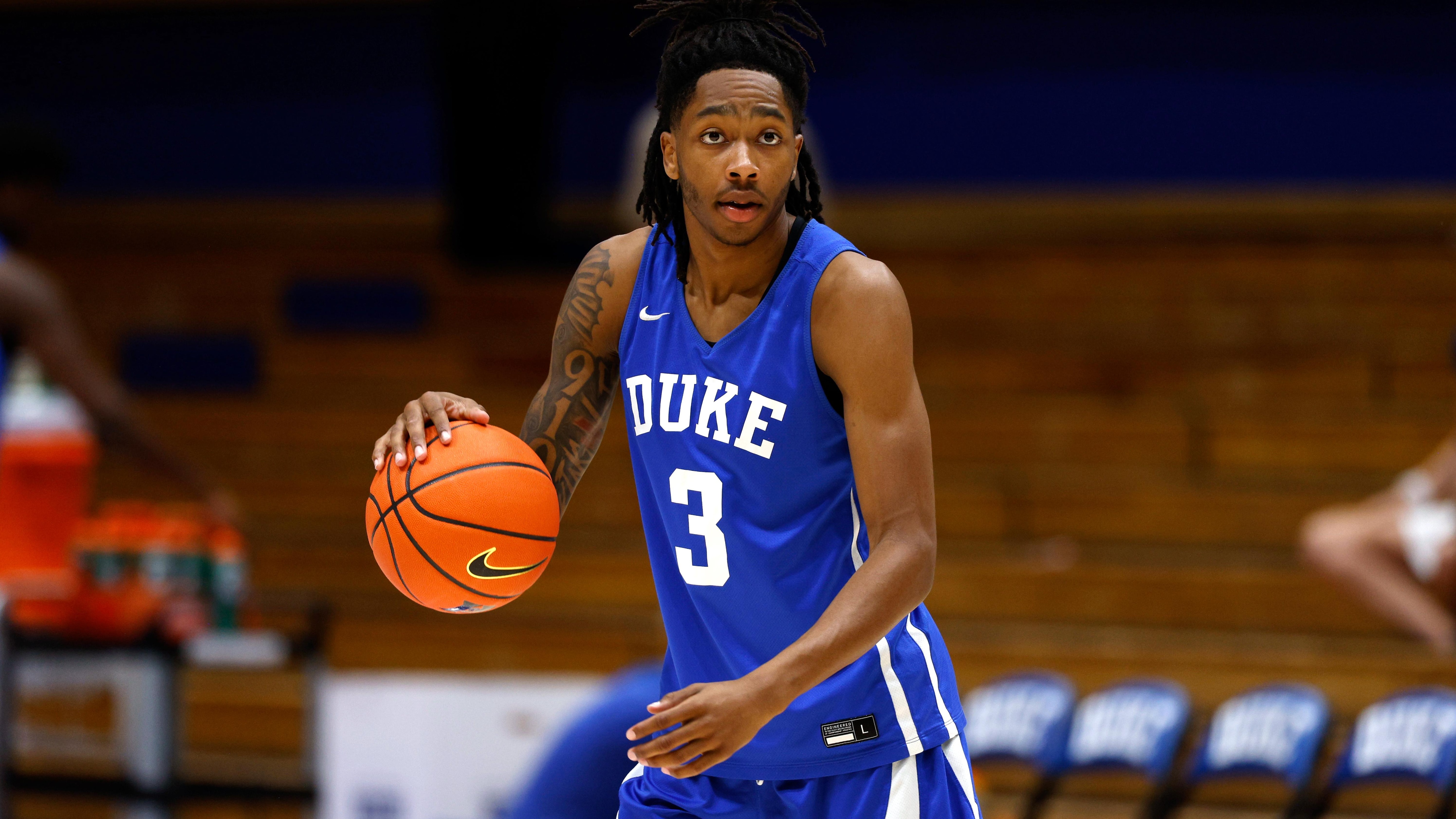
Isaiah Evans drew NBA interest as a freshman despite playing mostly in a shooting-specialist role. His high school tape showed more self-creation and three-level scoring ability, and with a larger role in 2025-26, he should be able to show more off the dribble.
Even a similar-looking Evans should have fans from teams that value his stroke for a 6'6" wing.
27. Yaxel Lendeborg (Michigan, SF/PF)
24 of 50
Yaxel Lendeborg was considered a borderline first-rounder for the 2025 draft, but a return to college and transfer to Michigan suggests his NIL offer, a bright spotlight and easier path up to the 2026 board were more attractive.
No player in the country put up two-way counting stats like Lendeborg did at UAB. At 6'9", the versatility to handle, finish, pass and rebound suggests NBA teams could use Lendeborg in a frontcourt Swiss Army Knife role.
More shooting development at Michigan will be his ticket back into the first-round mix.
26. Dash Daniels (Melbourne, PG/SG)
25 of 50
Dash Daniels just became the youngest player since Ben Simmons to suit up for the Boomers in the Asia Cup.
Similar to his brother, Atlanta Hawks' guard/wing Dyson, Dash has become a well-tracked prospect due to his defense and backcourt versatility since 15 years old.
He did struggle this summer at the U19 World Cup, where he had trouble creating separation and getting balanced looks. Daniels relies a little too much on tough runners and difficult touch shots. He's also not as big as Dyson, though Dash may have a better three-point shooting track record at this age, and he'll offer similar secondary playmaking.
He'll join Melbourne United for the 2025-26 season, a team that lost Matthew Dellavedova and Ian Clark, but added Tyson Walker and Milton Doyle. Daniels will try to build a draft case around his combo-guard skill set and defense in what figures to be a limited reserve role.
25. Jaden Toombs (SMU, C)
26 of 50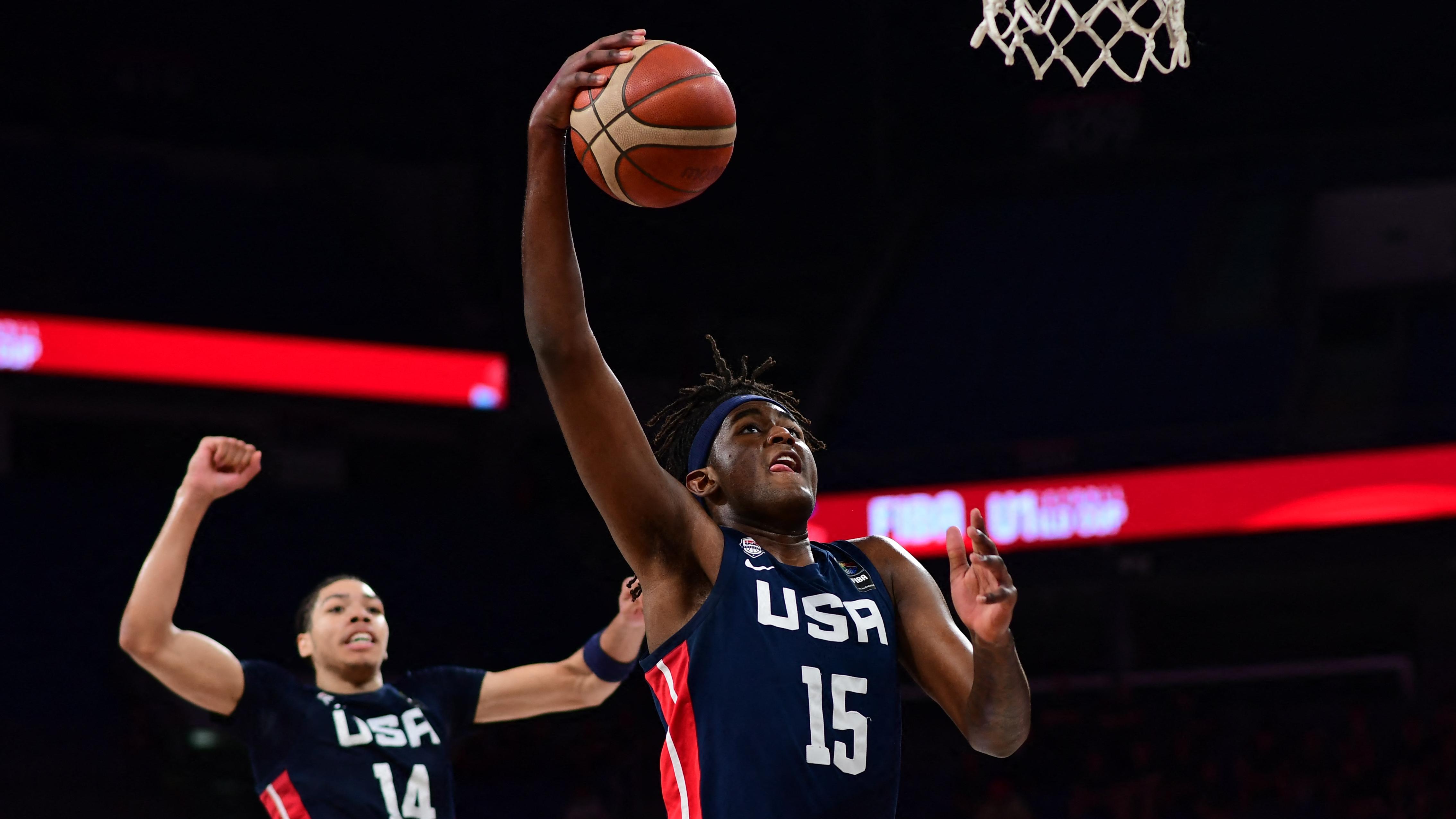
Jaden Toombs figures to be productive from Day 1 using his size (6'11", 230 lbs), scoring around the key and passing IQ.
Though not the most modernized or creative scorer, he's efficient in his office, and he adds value to the offense with his decision-making and vision.
Scouts should be drawn to his defensive fit as well, with Toombs possessing the type of length and foot speed for rim protection and keeping guards or wings in front away from the basket.
24. Labaron Philon (Alabama, PG)
27 of 50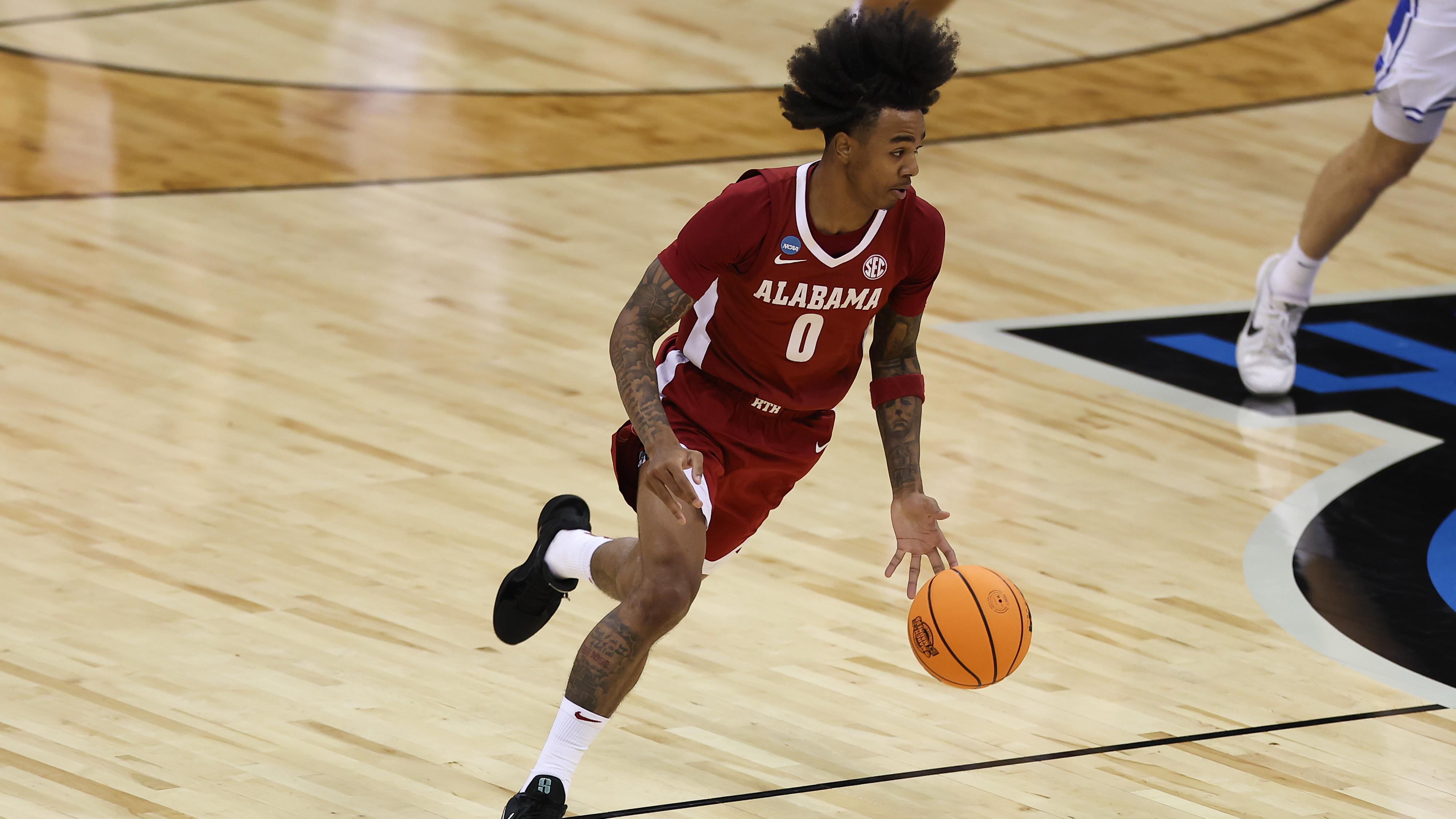
Labaron Philon generated buzz last year with how he's able to get to different spots, score with unteachable touch shots and set teammates up.
Limited pull-up shooting and three-point range raised too many questions for all scouts to buy in, however. The areas he'll need to improve remain obvious.
Still, even a repeat of last season could lead to interest in Philon, whose creativity, playmaking and defensive instincts could carry over.
23. Adam Atamna (ASVEL, SG)
28 of 50
Adam Atamna made noise at ANGT in February by averaging 33.0 points in four games. The 17-year-old just added to his impressive shotmaking tape in July at the U18 European Championships.
Listed at 6'4", he doesn't pop physically or athletically, but his consistent production with such an effortless and diverse shot delivery has become more and more compelling. He makes jumpers, runners and fallaways with a level of ease that just looks different.
While many top international prospects have recently chosen to play college basketball, Atamna will suit up for ASVEL next season. The hope will be that he's able to play enough to continue building on his momentum and development.
22. Nikolas Khamenia (Duke, SF)
29 of 50
A loaded 2025-26 Duke roster could cut into Nikolas Khamenia's reps and delay his optimal time to declare for the draft.
He possesses a coveted mix of 6'8" wing size, shooting ability, passing IQ and intensity. Coming off a strong Nike Hoop Summit week back in April, Khamenia looked sharp once again for USA at the U19 World Cup, where he shot 44.0 percent from three and flashed a mix of perimeter skill and interior scoring moves.
21. Bennett Stirtz (Iowa, PG)
30 of 50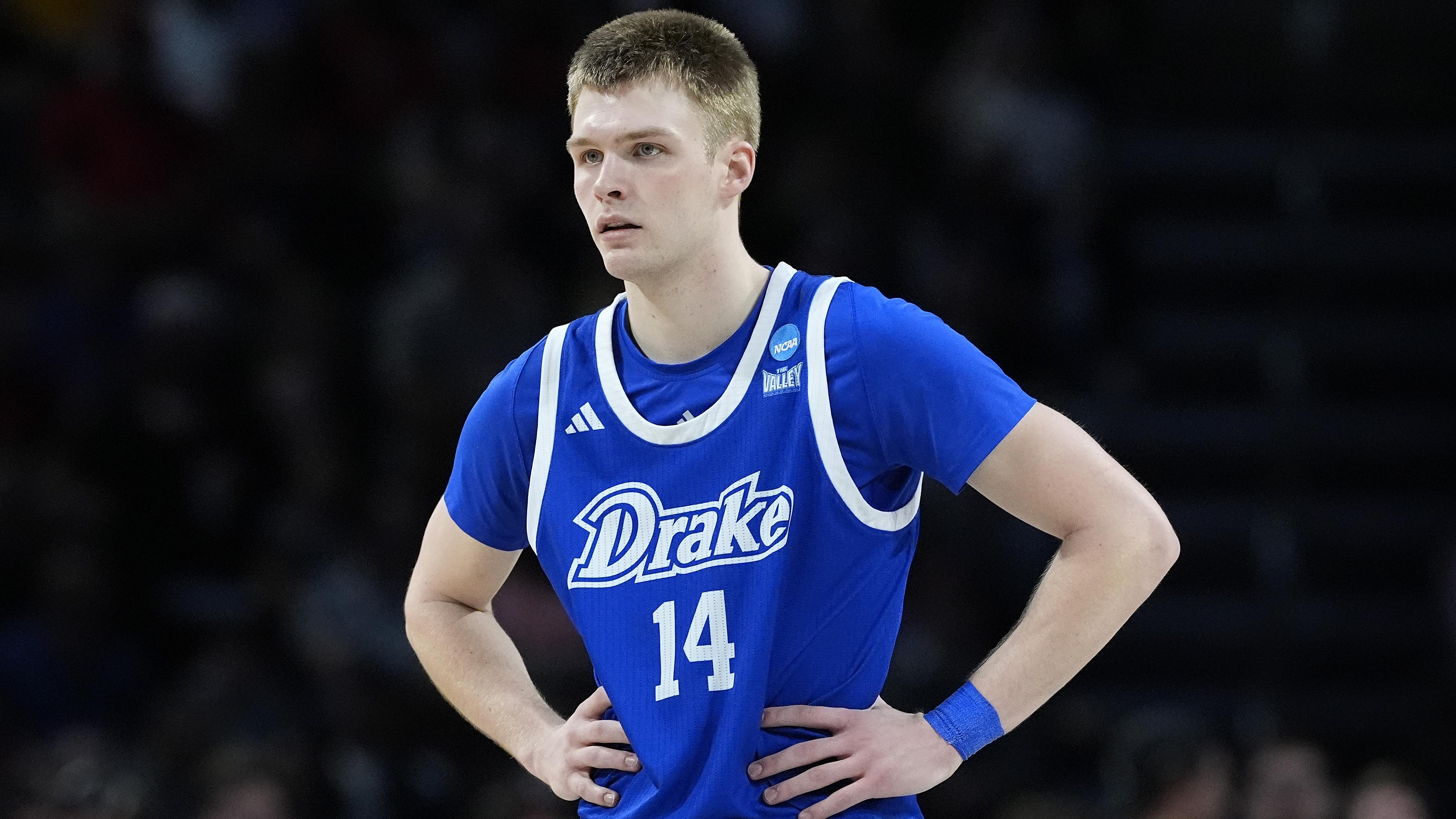
Creativity, shotmaking, IQ and overwhelmingly strong analytics should help scouts see past Bennett Stirtz's athletic limitations.
A strong NCAA tournament—21 points, eight assists against Texas Tech and 21 and four against Missouri—was also highly validating for the former Division II standout.
Now at Iowa, Stirtz seems prepared to replicate last year's offensive success against more credible opponents. We're buying his ball-handling/shooting skills, finishing feel and decision-making.
20. Alijah Arenas (USC, SG)
31 of 50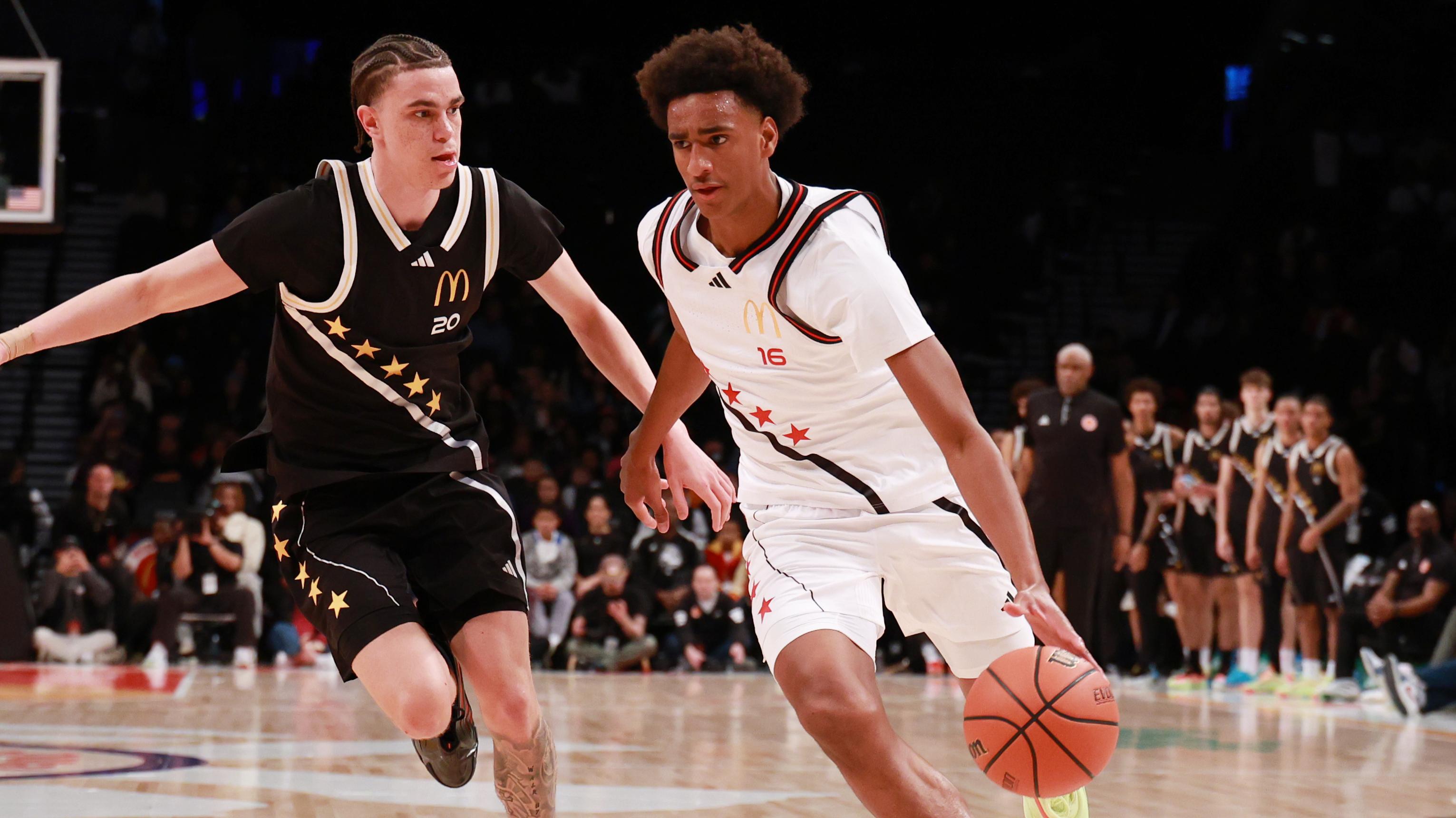
A torn meniscus will cost Alijah Arenas six-to-eight months and potentially a chance to build a strong one-and-done case to scouts.
Though the injury could set him back a year, he'd developed into one of the class' top scoring prospects with advanced ball-handling creation and shotmaking skills.
It always looks like it comes easily for Arenas when he's on the floor slicing through defenses and hitting tough jumpers. Whether he winds up a 2026 prospect or 2027 will come down to his return timetable and urgency to go to pro.
19. Hannes Steinbach (Washington, C)
32 of 50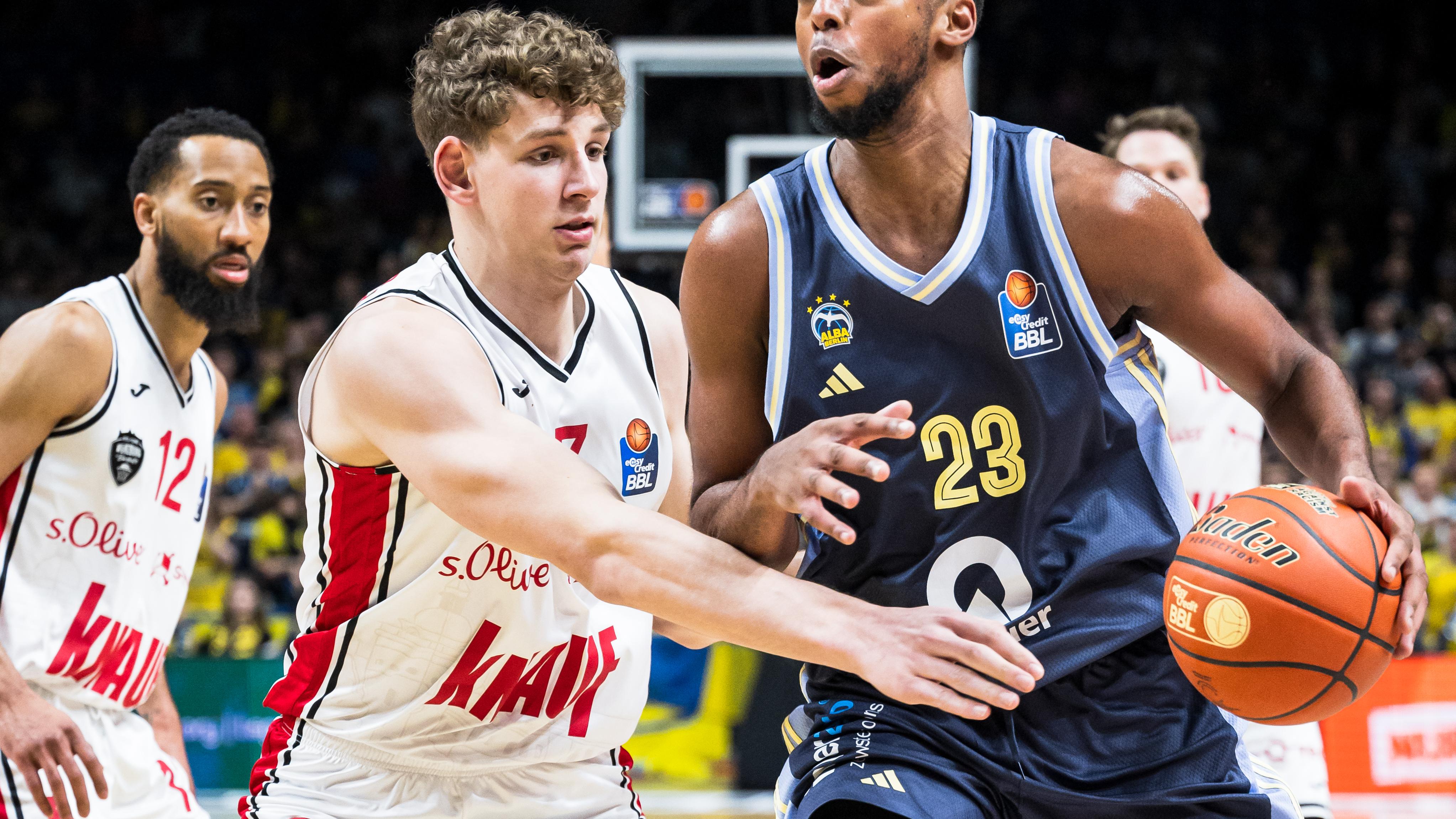
Hannes Steinbach gives defenses trouble with some older school, back-to-the-basket offense. Scouts should see his success around the post translating based on his 6'11" size, patience, footwork and touch.
Occasional flashes of vertical pop at the rim, shooting and face-up moves make Steinbach more interesting. He averaged 17.4 points on 65.7 percent from the floor at the U19 World Cup where he led Germany to a Silver medal.
Washington figures to feature Steinbach in the half court offense, which could allow him to showcase both his inside game, pick-and-roll skill set and developing scoring versatility.
18. Karter Knox (Arkansas, SF/PF)
33 of 50
Karter Knox came alive in February last season, and now he's back at Arkansas after going through the draft process to join a team that lost four of its top-five scorers.
Right as he started to get regular playing time after the new year, his confidence visibly started to build. The production followed.
Knox should receive starter minutes to use his powerful frame, athleticism downhill and shotmaking for transition and off-ball scoring.
17. Isiah Harwell (Houston, SG/SF)
34 of 50
Isiah Harwell shot 43.1 percent from three last year during EYBL Scholastic play to further strengthen his case as a three-and-D prospect.
Offensively, the 6'6" wing has shown some ability to create off the dribble, knock down jumpers with confidence and finish through contact. Scouts are still watching to see how consistently he can separate and convert against elite athleticism, though.
He’s the type of prospect whose tools and mindset scream long-term NBA role player with potential to carve out more if his skill level keeps trending up.
16. Karim Lopez (New Zealand Breakers, PF)
35 of 50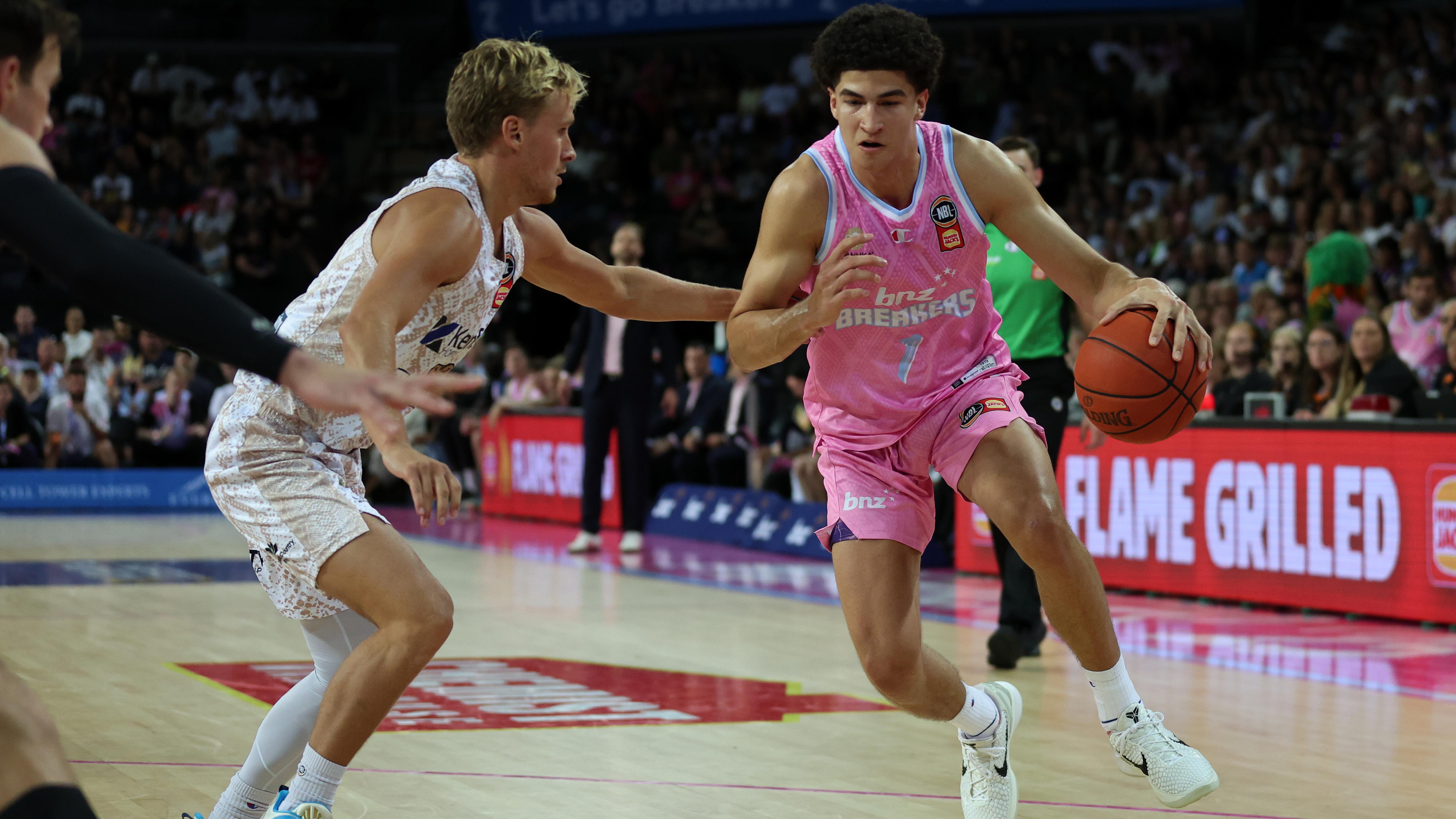
At 17 years old, Karim Lopez looked like he belonged in the NBL playing 21.9 minutes.
At 6'8", he's at his best attacking, using an effective mix of ball-handling, strength and body control to attack closeouts. Lopez has an interesting mix of physical tools and combo-forward skills, but his trajectory and draft stock will be closely tied to his shooting development.
Lopez will have just turned 19 with two years of pro experience before the 2026 draft, and he's demonstrated some shotmaking skill with 21 made threes in 25 games for New Zealand. No pull-up and rigid mechanics do raise some concerns.
15. Caleb Wilson (North Carolina, PF)
36 of 50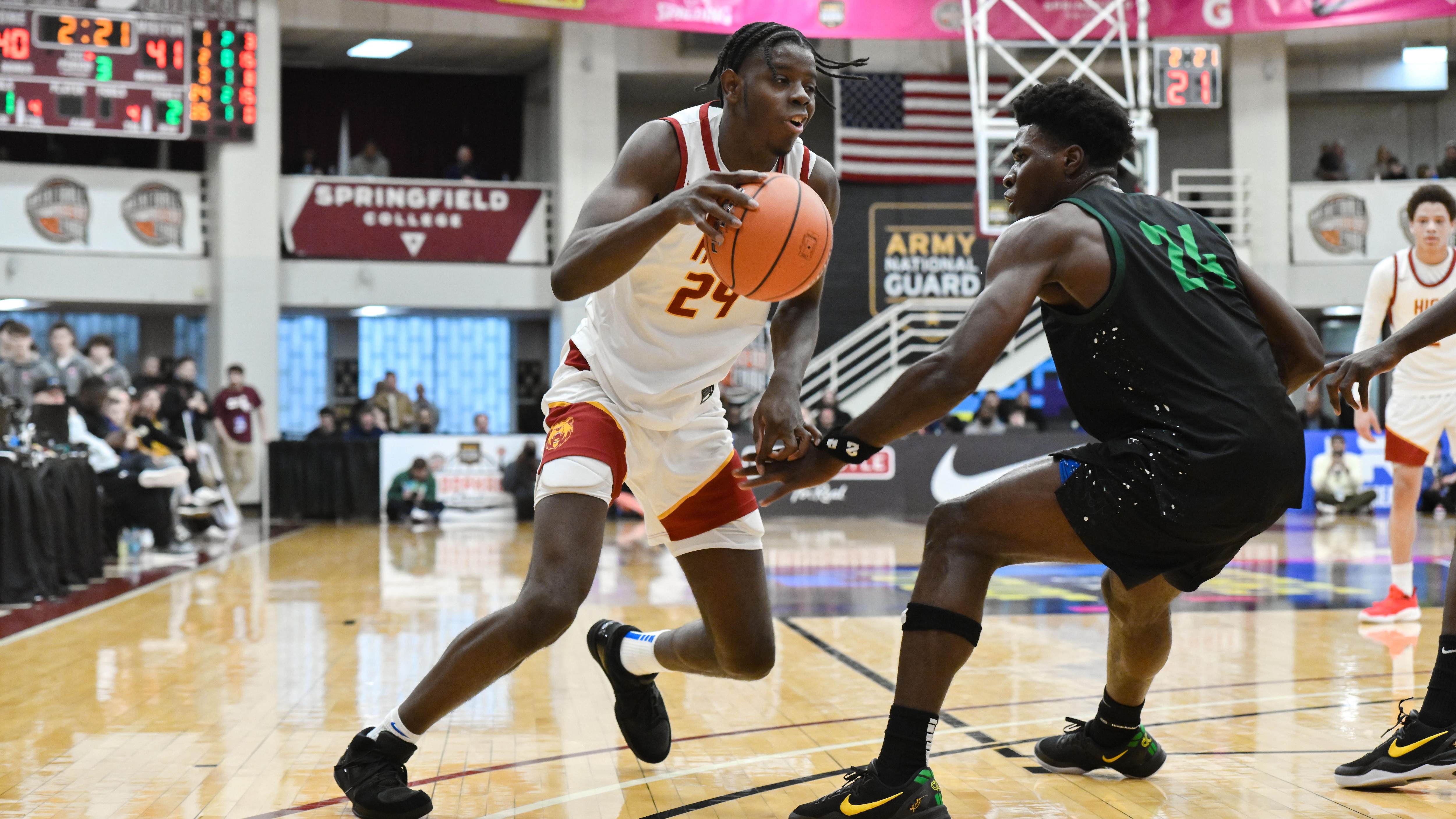
Caleb Wilson's production and value are fueled by physical tools, quickness and leaping ability. At 6'9" with a strong frame, he mainly leaves his mark on games by delivering easy baskets (transition, off dump-downs, putbacks), defending in space, creating turnovers and making plays on the ball.
Defensively, Wilson's size, feet and strength are tremendous, particularly for guarding wings around the perimeter. He's the type of defender who could rank near the top of the leaderboard of three-point attempts blocked.
Offensively, Wilson does add something with his passing, but his self-creation skill and shooting are behind his physical abilities. He will also be nearly 20 years old by the time of the 2026 NBA draft.
14. Tahaad Pettiford (Auburn, PG)
37 of 50
Some scouts had a first-round grade on Tahaad Pettiford after last year's NBA combine. There was still a lack of certainty regarding his draft stock, with the barefoot 6'0" measurement and 169-pound frame behind the hesitation.
But with the way Pettiford moves—his shiftiness, his explosion off one foot—and with how he's able to shoot off the dribble, use floater touch or set teammates up—he should have enough effective breakdown ability and scoring skills to succeed in some type of instant-offense role at the next level.
He made 63 pull-ups playing 22.9 minutes per game while converting 18-of-35 runners and registering a solid 23.0 assist percentage. And though Pettiford's efficiency at the rim was below average, the tape shows a far more advanced/athletic finisher than the stats suggest.
13. Braylon Mullins (Connecticut, SG)
38 of 50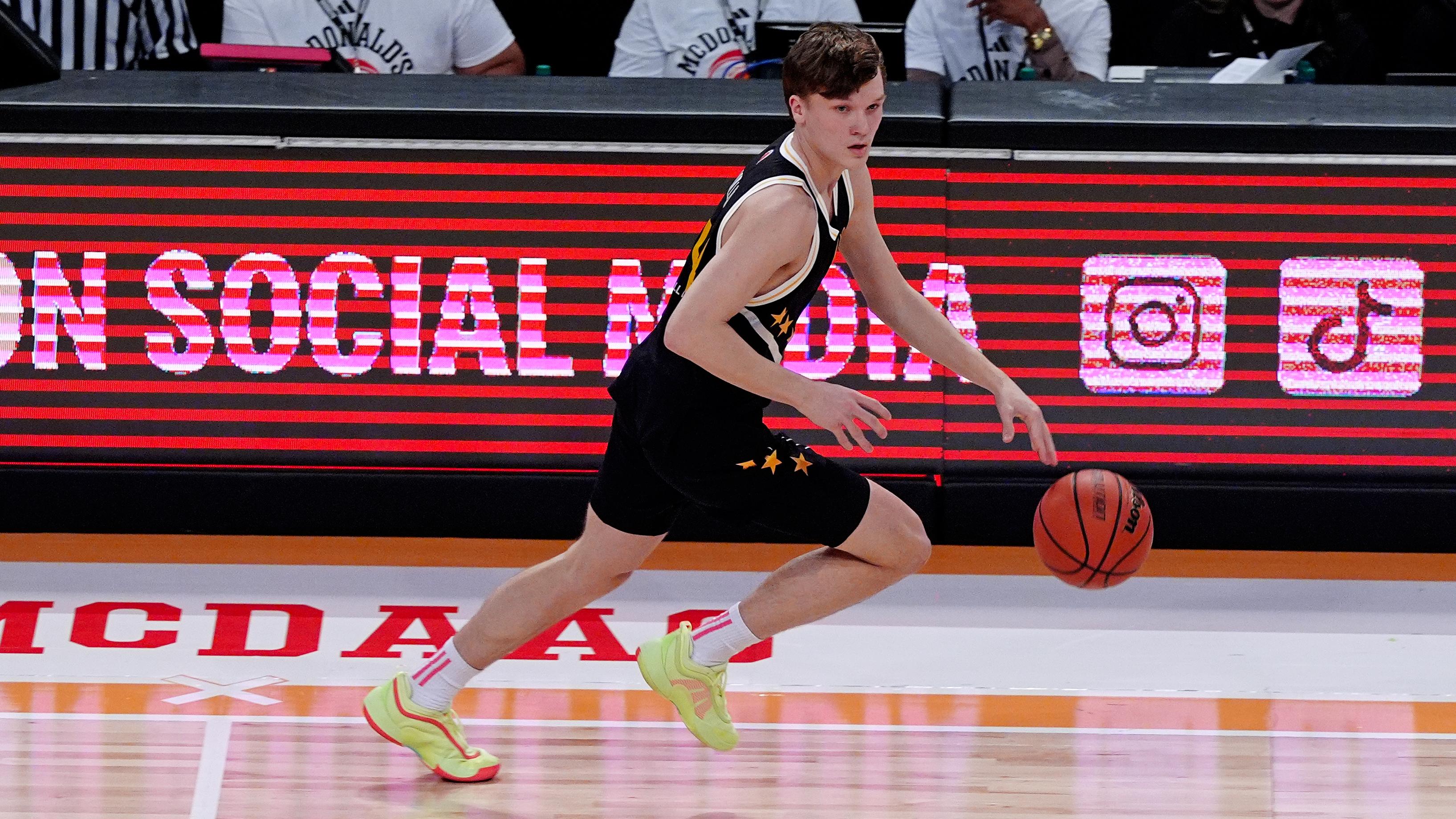
Alongside veterans at Connecticut, Braylon Mullins finds himself in a favorable spot to play to his strengths as a skilled shooter.
The Huskies run a lot of actions that involve off-ball movement, and that should put Mullins in a good position to showcase his shotmaking and footwork around screens.
With functional athleticism and feel for finishing, plus some visible toughness to defend, Mullins should look like a well-rounded fit, even if he's not used frequently as a ball-handler or high-usage creator.
12. Cayden Boozer (Duke, PG)
39 of 50
While Cayden Boozer won't come out scoring in volume or wowing with any flashy athletic traits, there are going to be fans of his playmaking IQ and maturity running offense.
He's out there to set up teammates first and score when the defense gives something up. His head is always up in transition, and he has willing vision to the wings and corners off penetration.
Boozer consistently puts up big assist numbers. With 6'4" size and a translatable signature skill in passing, it's easy to buy his facilitating translating to Duke and eventually the NBA.
Boozer isn't as adept at self-creation, and inconsistent shooting could cause scouts to hesitate. But he has clearly made strides with his shotmaking and range. And he has excellent touch on his floater, which is going to be an important weapon to compensate for his lack of explosion in the lane.
11. Chris Cenac Jr. (Houston, PF/C)
40 of 50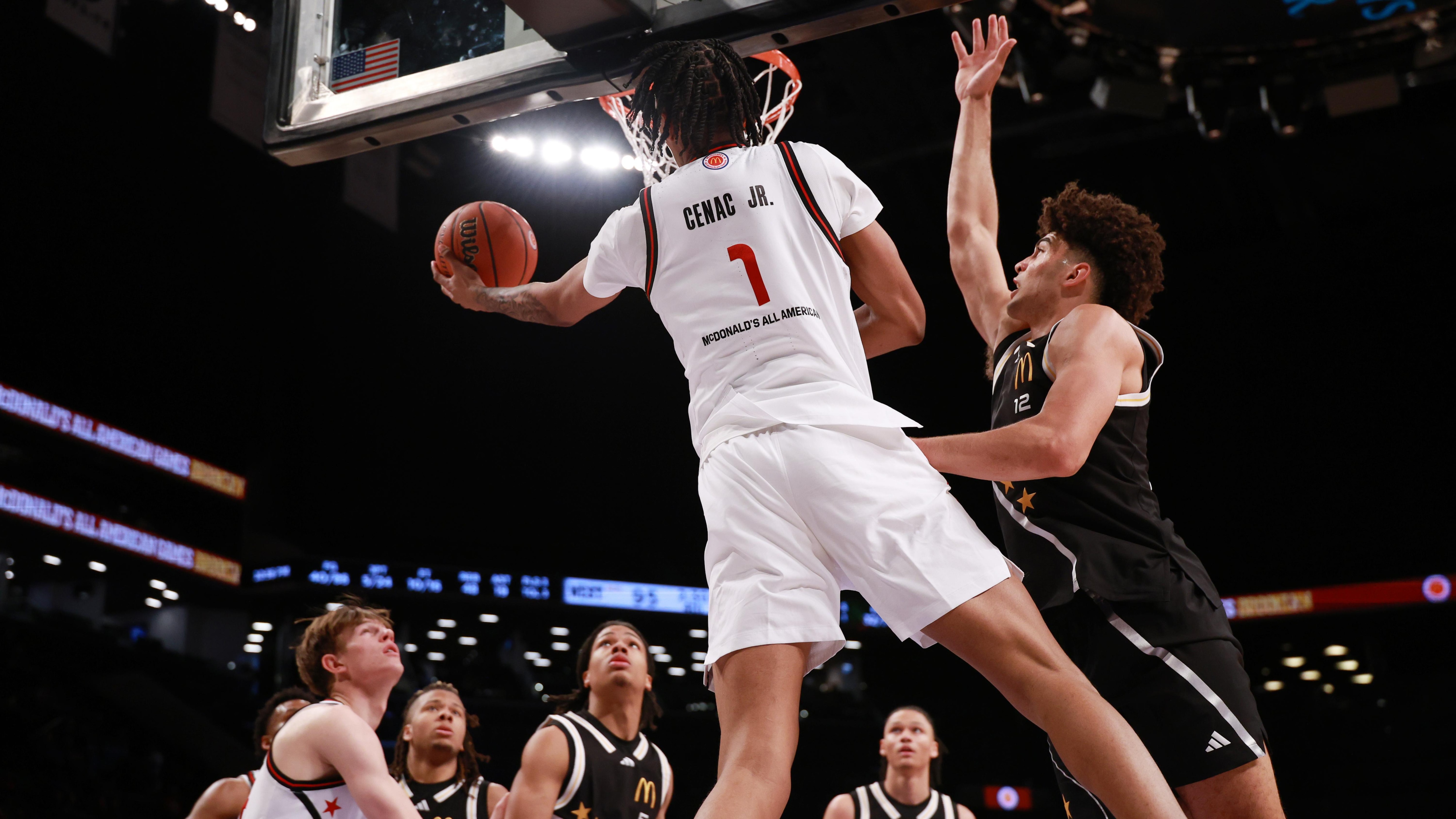
At 6'10", 230 pounds with 7'3" wingspan, Chris Cenac Jr. should instantly stand out with his measurements and shotmaking flashes.
Though not a dependable shooter, he's capable of hitting threes and difficult isolation or fallaways inside the arc.
Cenac doesn't finish as well as he should with his size and length, as he can struggle to make the right reads going up in traffic.
On one hand, he has a unique ability to hit tough jumpers at his size. On the other, he's not a proficient perimeter scorer, and he doesn't always use his tools effectively inside.
10. Dame Sarr (Duke, SG/SF)
41 of 50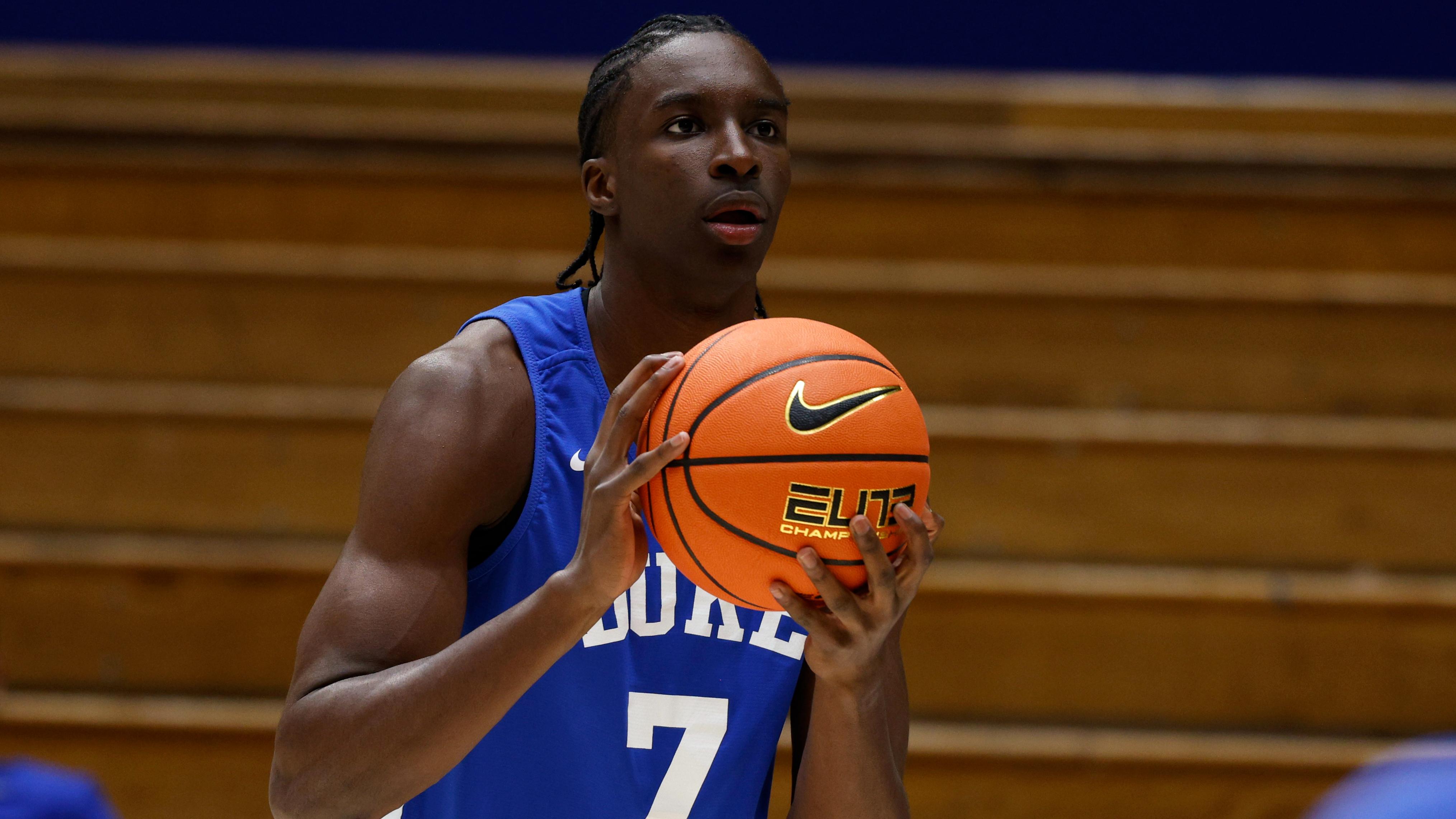
Dame Sarr made some eye-catching plays at the Nike Hoop Summit, an event he earned an invite to by giving Barcelona efficient minutes at 18 years old.
He measured 6'8" with a 7'0" wingspan as well.
Sarr shot a combined 17-of-37 from three between Euroleague and ACB play. He really popped most in transition, where he blew past defenses with his speed and long strides while demonstrating clear feel as a finisher with both hands.
Though Duke is stacked again this year with five-star freshmen and returners waiting for breakout opportunities, coach Jon Scheyer should find plenty of reasons to use Sarr's athleticism, shotmaking and defensive length.
9. Brayden Burries (Arizona, SG)
42 of 50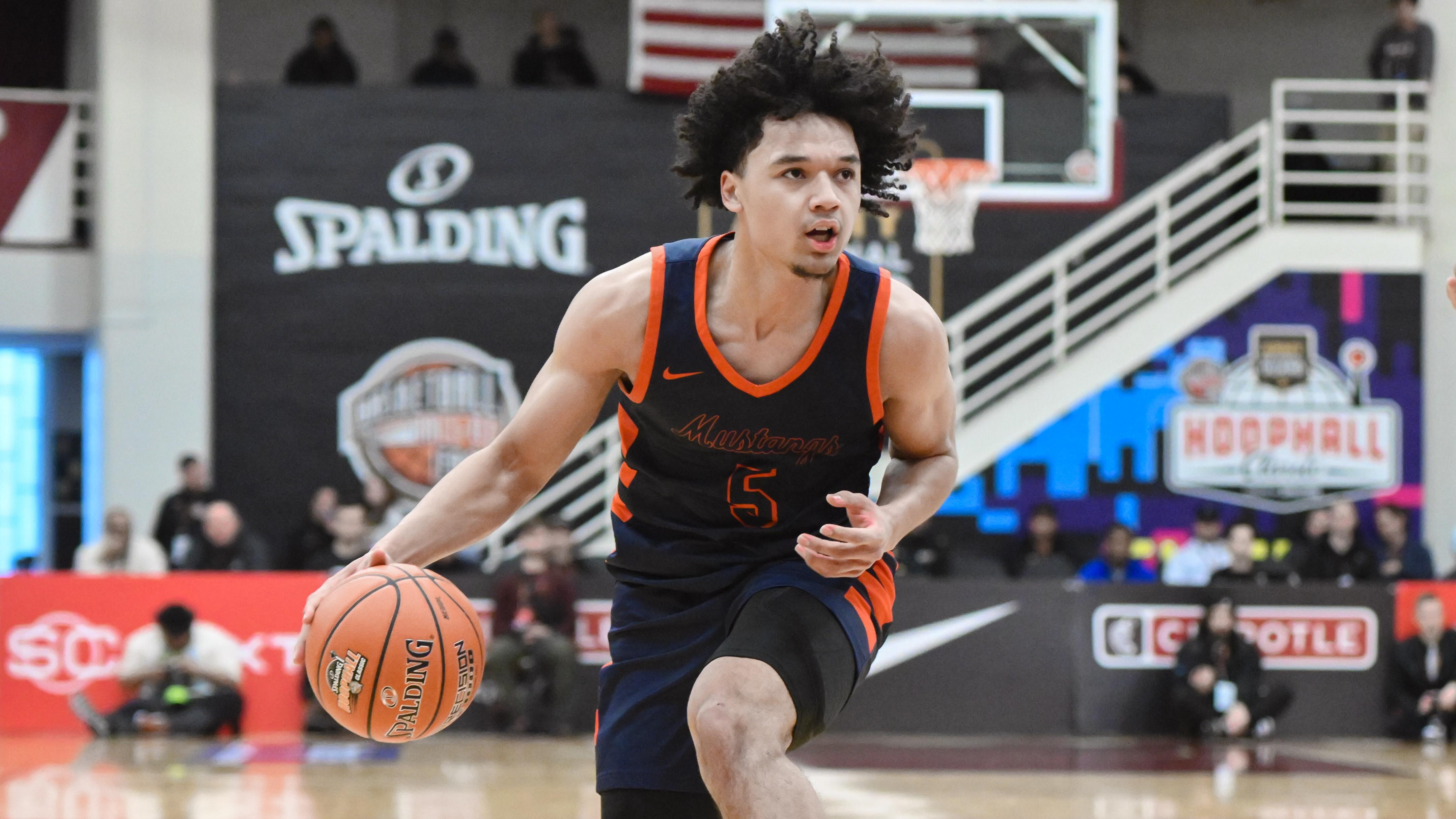
Creative with sharp footwork and an ability to improvise, Brayden Burries established himself as one of the best on-ball guards in high school.
He's equipped with counters, both using his dribble and with his ability to hit different types of runners, flip shots or floaters in traffic. His finishing/layup package is very impressive, as he's able to create easy angles for himself.
He's a shotmaker with a good-looking stroke, especially off the dribble. NBA teams are going to detect an NBA-level scorer, though he could help himself further by making smart passing reads and shot-selection decisions.
8. Mikel Brown Jr. (Louisville, PG)
43 of 50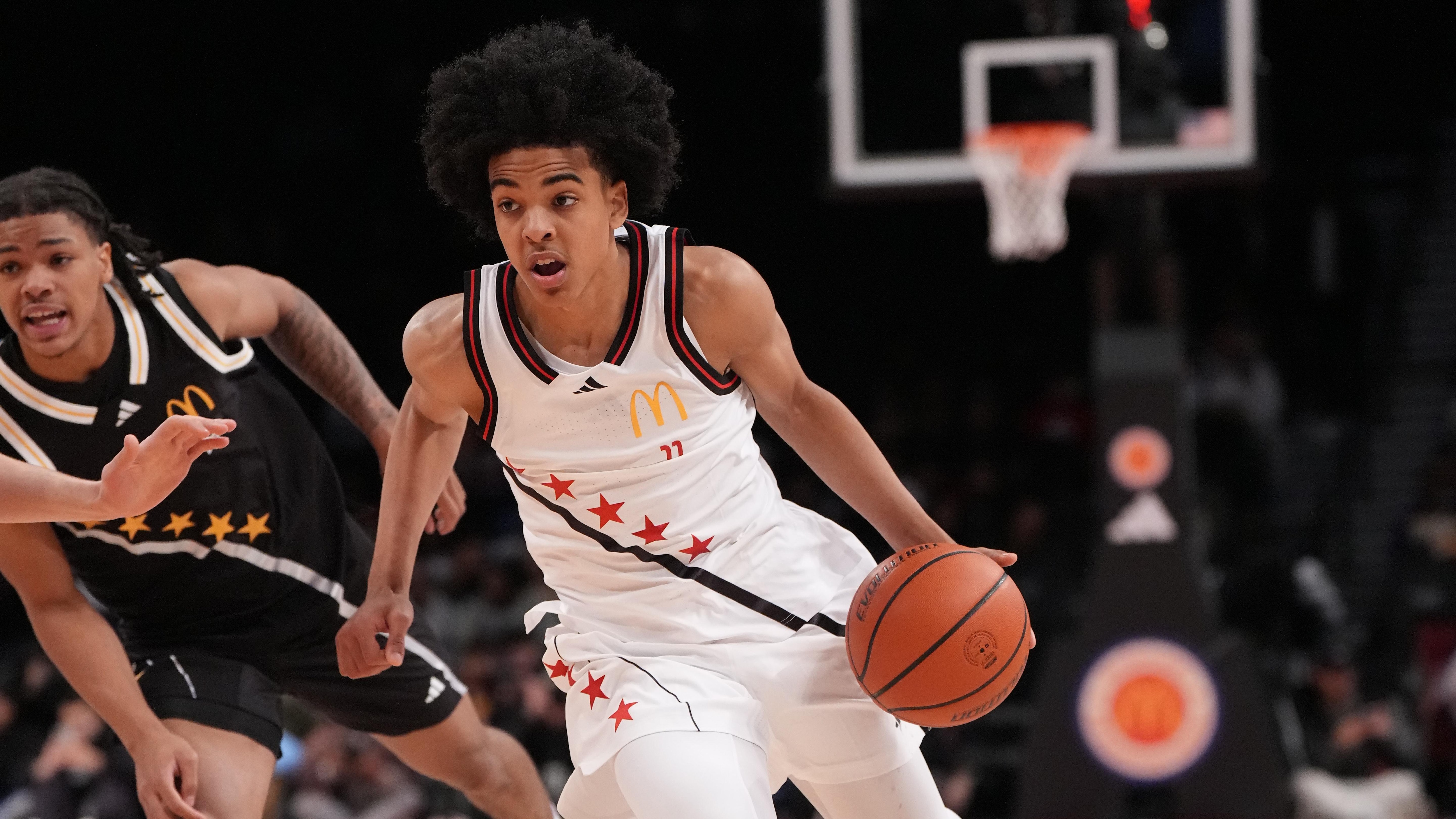
Mikel Brown Jr.'s stock is hot following the U19 World Cup when he shot 47.6 percent from three and totaled 43 assists to 15 turnovers.
Validating those numbers with consistent shooting and playmaking reads at Louisville should lock Brown into the lottery discussion all season. He's shifty and elusive off the dribble, capable of breaking down defenses, creating opportunities and putting pressure on the rim.
We'll have a close eye on his thin frame on finishing attempts and whether he's able to earn himself quality looks on a regular basis.
With Louisville listing Brown at 6'5", a number that says he could play either guard spot, he may even have some margin for error with his decision-making.
7. Nate Ament (Tennessee, SF)
44 of 50
Nate Ament climbed toward the top tier in the 2026 class with tightening ball-handling and shotmaking skills for a 6'9" wing.
Though still raw at 190 pounds with occasional choppy execution, flashes of creativity, open-floor handling and shooting versatility will have scouts visualizing upside and staying patient.
Ament is thin, could struggle with physicality and needs to continue improving his decision-making and overall execution. Tennessee and Rick Barnes also don't have a strong track record for developing or producing one-and-done first-rounders.
Ament's talent and skill set for a player with these measurements will still look highly enticing, regardless of his impact or consistency.
6. Tounde Yessoufou (Baylor, SG/SF)
45 of 50
Tounde Yessoufou will replace VJ Edgecombe at Baylor and similarly look to show improving offensive skills that complement his physical tools and explosion.
He capitalized on a handful of opportunities last year where NBA scouts were allowed in the building. His 24-point Nike Hoop Summit game against the U.S. was eye-opening, as it showed his continued growth as a scorer and shotmaker.
Otherwise, Yessoufou had built a reputation around his powerful frame, athleticism and motor, a combination he used for transition and defense. But he has started to complement his outstanding physical abilities with sharper footwork, touch and shooting skills.
5. Koa Peat (Arizona, PF)
46 of 50
Koa Peat figures to produce right away at Arizona with his combination of strength/physicality and improving shotmaking skill/touch.
He has the body and mentality to play bully ball inside. But his upside pops most on the flashes of ball-handling into drives plus the mid-range jumpers with his pull-up and fallaway.
Reasons to hesitate before declaring Peat a top-10 pick: He's not a reliable three-point threat, and he could get caught trying too hard to overpower opponents down low or hit tough contested two-point shots.
4. Jayden Quaintance (Kentucky, PF)
47 of 50
A torn ACL last February creates uncertainty around projections for Jayden Quaintance.
At 17, he started 24 games for Arizona State, where he averaged 9.4 points, shot 60.0 percent inside the arc and blocked shots at an outstanding rate (9.8 block percentage) for a freshman.
Quaintance would warrant lottery consideration in June even if he didn't suit up at all for Kentucky. He's still younger than most freshmen, not turning 19 until after the 2026 draft. But there has been less of a rush for prospects to go pro early with NIL.
While he still has to improve his shooting range and overall half-court creation, he'll offer the type of functional physical tools, instincts and potential skill set that can translate to scoring efficiency and a special defensive impact in the NBA.
There are a number of different scenarios that could play out with Quaintance, depending on his return date (if at all) and intentions on starting his pro career.
3. AJ Dybantsa (BYU, SF)
48 of 50
A 6'9" wing with special athletic abilities and advanced shot-making skill, AJ Dybantsa will enter the college season as the top prospect in the 2026 class for many scouts.
He combines explosiveness with strong body control. He'll generate plenty of offense at the rim just through his burst, power and leaping. But his takeover scoring ability comes from ball-handling for creation, rise-and-fire shooting and advanced footwork to separate.
Confident pulling up off the dribble, attacking closeouts and slowing down into floaters, Dybantsa has the mismatch measurements and skill set to be a No. 1 option in college and the pros.
Only questions about his decision-making and defensive consistency can knock him off the No. 1 spot on boards.
2. Cameron Boozer (Duke, PF/C)
49 of 50
Since he was 15 years old, Cameron Boozer has separated himself with his combination of skill, strength, feel and maturity. At 6'9" and 250 pounds, he brings a pro-ready frame and a polished inside-out game built on efficient scoring, advanced footwork and high-IQ decision-making.
Boozer may not have vertical pop or perimeter shake, but he wins battles with fundamentals, touch around the basket and a growing shooting range. He regularly impacts games with his rebounding, passing and his ability to play within structure, making winning plays without needing volume.
Boozer's high school resumé is as decorated as anyone's, and the consistent winning should be taken into account when he's evaluated.
1. Darryn Peterson (Kansas, SG)
50 of 50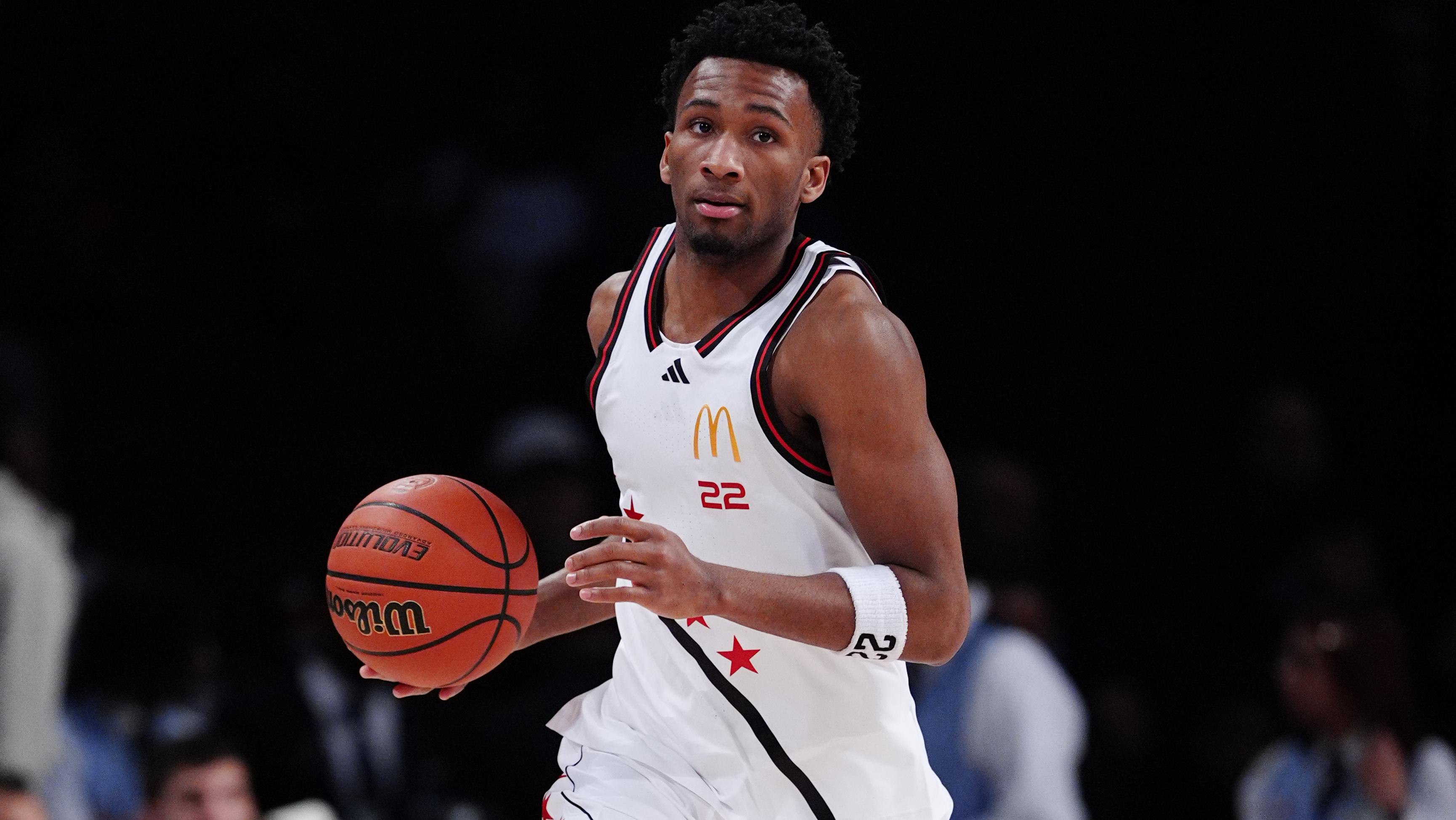
Darryn Peterson has a strong argument as the most skilled and complete shooting guard prospect of the past decade. Compared to Anthony Edwards at the same stage, Peterson looks more refined with his creation, pacing, shotmaking and ability to settle into a playmaker role when the game calls for it.
While he may not possess overwhelming explosion or power, Peterson still possesses advantageous athletic traits that come alive at both ends of the floor. He should look like an immediate plus defensively for Kansas with his lateral quickness and knack for timing steals or blocks.
AJ Dybantsa might deliver more viral moments at BYU, but Peterson has a strong chance to rival his impact through more efficient, translatable production.
